Arthritic Feet Relief: Comprehensive Guide to Symptoms, Causes, Diagnosis, and Treatments
What are the common types of foot and ankle arthritis. How is foot and ankle arthritis diagnosed. What are the most effective treatments for arthritic feet. Which home remedies can provide relief for foot arthritis pain. What lifestyle changes can help manage foot arthritis symptoms.
Understanding Foot and Ankle Arthritis: Types and Prevalence
Arthritis is a prevalent condition that can significantly impact the feet and ankles, especially as we age. It encompasses over 100 diseases characterized by inflammation and swelling in and around joints and nearby soft tissues. As the smooth cartilage inside joints deteriorates, bones begin to rub against each other, leading to pain and reduced mobility.
Several types of arthritis can affect the feet and ankles:
- Osteoarthritis (OA)
- Rheumatoid arthritis (RA)
- Gout
- Psoriatic arthritis
- Post-traumatic arthritis
Osteoarthritis: The Most Common Form
Osteoarthritis, often referred to as “wear-and-tear” arthritis, is the most prevalent type. It typically develops gradually over many years and commonly affects specific foot and ankle joints:
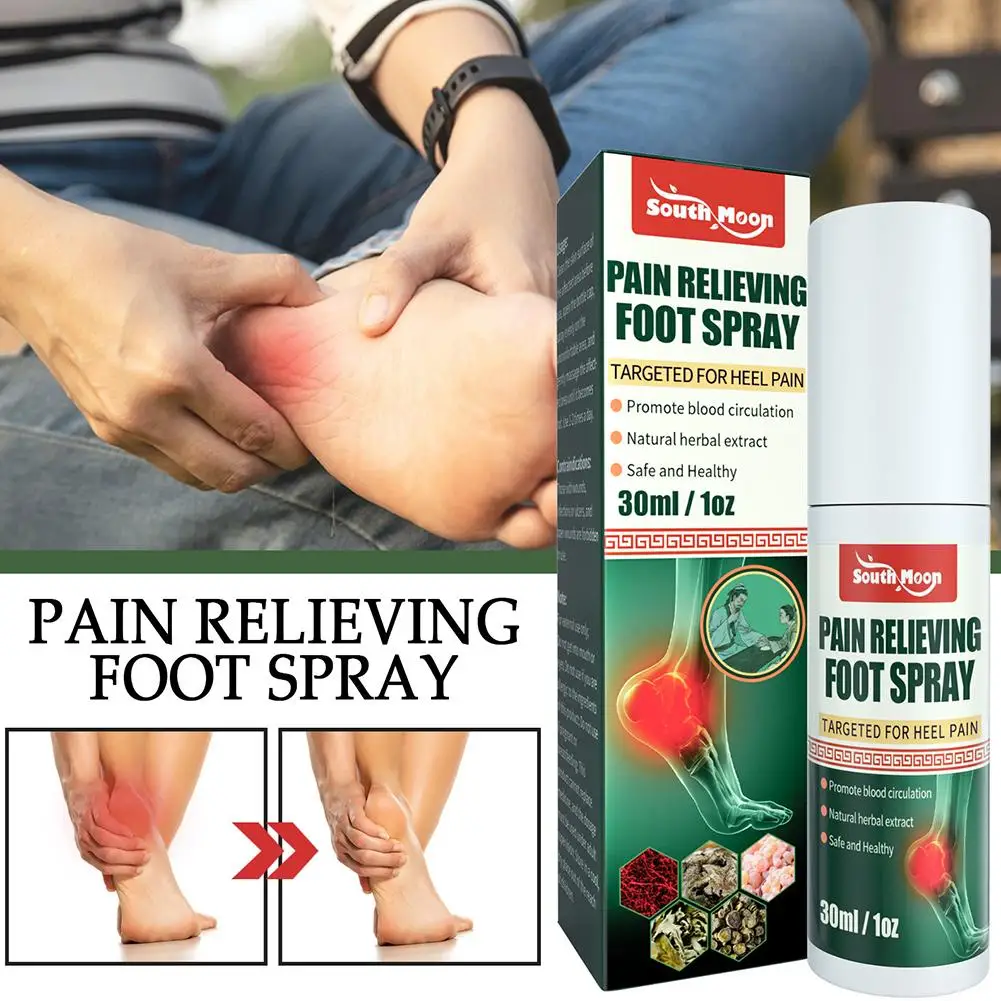
- The three joints involving the heel bone, inner mid-foot bone, and outer mid-foot bone
- The joint of the big toe and foot bone
- The joint where the ankle and shinbone meet
Rheumatoid Arthritis: An Autoimmune Culprit
Rheumatoid arthritis is a severe autoimmune disease where the body’s immune system attacks the joints. It usually occurs symmetrically, affecting the same joint on both sides of the body.
Gout: A Dietary-Induced Arthritis
Gout results from a buildup of uric acid in the body, often due to dietary factors. It most commonly affects the big toe, as it’s the farthest body part from the heart.
Psoriatic Arthritis: Beyond Skin Deep
Psoriatic arthritis can impact one or more joints, including the ankles and toe ends. It may also cause toe swelling known as dactylitis.
Post-Traumatic Arthritis: The Aftermath of Injury
This type of arthritis develops following an injury, particularly after a dislocation or bone fracture. Symptoms may not appear for years after the initial trauma.

Recognizing the Symptoms of Foot and Ankle Arthritis
Identifying the symptoms of foot and ankle arthritis is crucial for early diagnosis and treatment. Common signs include:
- Tenderness when touching the joint
- Pain during movement
- Difficulty moving, walking, or bearing weight
- Joint stiffness, warmth, or swelling
- Increased pain and swelling after periods of rest
Can arthritis symptoms vary throughout the day? Indeed, many people with foot and ankle arthritis experience more severe symptoms in the morning or after long periods of inactivity. This phenomenon, known as “morning stiffness,” often improves with gentle movement and activity.
Diagnosing Foot and Ankle Arthritis: A Multi-Faceted Approach
Accurate diagnosis of foot and ankle arthritis involves a comprehensive evaluation by a healthcare professional. The diagnostic process typically includes:
- A thorough review of medical history
- Physical examination of the affected joints
- Imaging tests (X-rays, MRI, CT scans)
- Blood tests to rule out certain types of arthritis
- Joint fluid analysis in some cases
How do imaging tests help in diagnosing foot and ankle arthritis? Imaging tests play a crucial role in visualizing joint damage, assessing the severity of arthritis, and differentiating between various types of arthritis. X-rays can show joint space narrowing and bone spurs characteristic of osteoarthritis, while MRI scans can detect early signs of cartilage damage and inflammation.
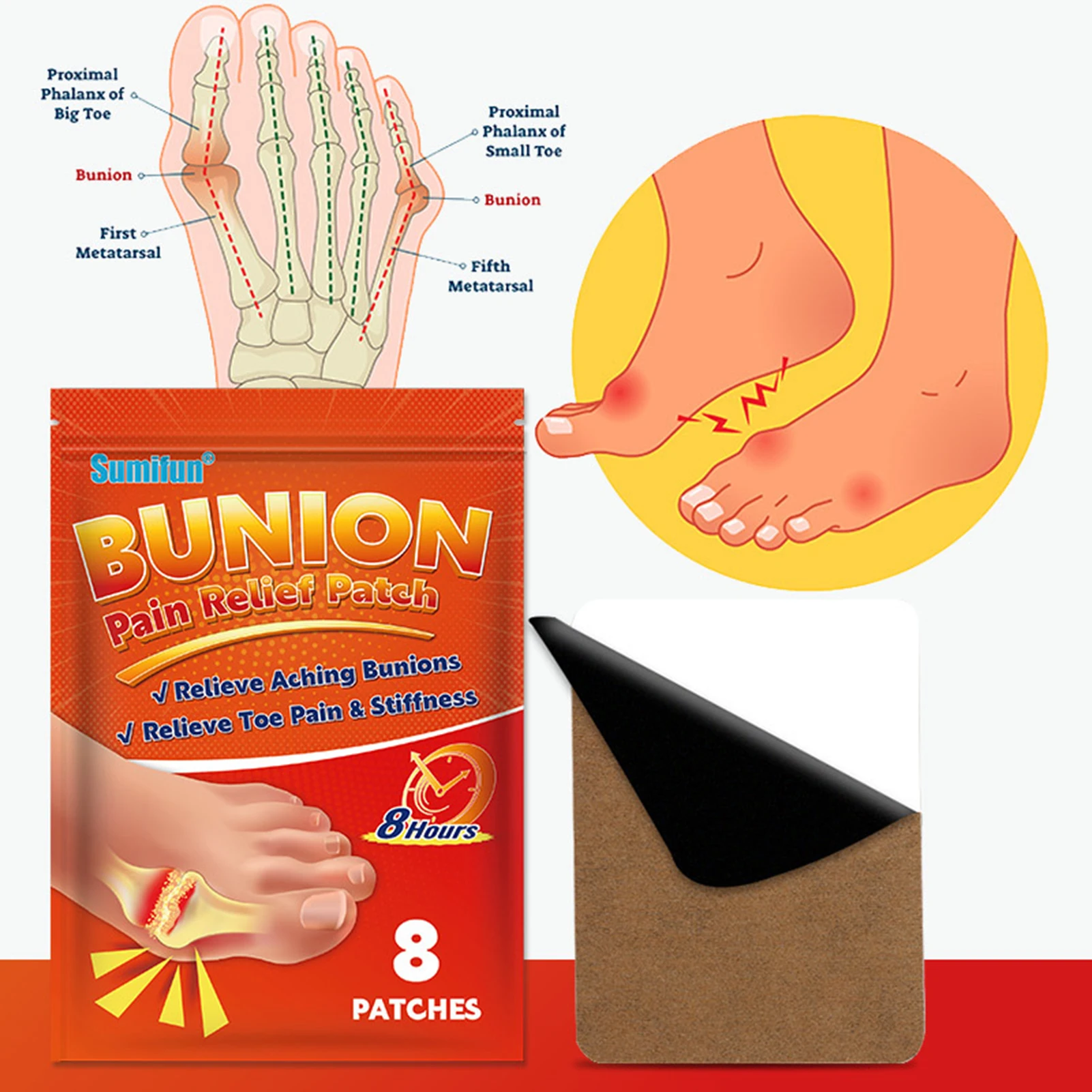
Effective Treatments for Arthritic Feet: From Conservative to Surgical Options
Treatment for foot and ankle arthritis is tailored to the individual’s symptoms, type of arthritis, and overall health. A range of options is available, including:
Non-Surgical Treatments
- Steroid injections into affected joints
- Anti-inflammatory medications
- Pain relievers
- Orthotic devices (pads, arch supports, shoe inserts)
- Assistive devices (canes, braces)
- Physical therapy
- Custom-fitted shoes
Surgical Interventions
When conservative treatments fail to provide adequate relief, surgical options may be considered:
- Fusion surgery (arthrodesis): Involves fusing bones together to reduce pain and improve stability
- Joint replacement surgery (arthroplasty): Replaces damaged bone and cartilage with artificial components
Are there any emerging treatments for foot and ankle arthritis? Research is ongoing in the field of regenerative medicine, including stem cell therapy and platelet-rich plasma (PRP) injections. While these treatments show promise, more studies are needed to establish their long-term efficacy and safety for foot and ankle arthritis.

Home Remedies and Self-Care Strategies for Foot Arthritis Pain Relief
In addition to medical treatments, several home remedies and self-care strategies can help manage foot arthritis pain:
Choosing the Right Footwear
Proper footwear is crucial for those with arthritic feet. Look for shoes with:
- A shape that matches your foot
- Good support (avoid slip-ons)
- Rubber soles for cushioning
- Flexibility
- Proper fit (consult a professional for sizing)
Beneficial Exercises for Foot Arthritis
Regular exercise can help maintain foot strength, flexibility, and pain relief. Try these exercises:
- Achilles stretch: Face a wall with palms flat against it. Step one foot forward and one back. Lean forward, keeping heels on the floor. Hold for 10 seconds, repeat 3 times on each side.
- Big-toe stretch: Place a thick rubber band around your big toes. Pull them apart towards your other toes. Hold for 5 seconds, repeat 10 times.
- Toe pull: Put a rubber band around the toes of each foot and spread them. Hold for 5 seconds, repeat 10 times.
- Toe curl: Practice picking up marbles with your toes.
Additional Home Remedies
- Apply ice or heat to affected joints
- Soak feet in warm water with Epsom salts
- Use over-the-counter pain relievers as directed
- Try foot massages to improve circulation and reduce pain
How often should foot exercises be performed for maximum benefit? While individual needs may vary, aim to perform these exercises at least 3-4 times per week. Consistency is key in maintaining foot strength and flexibility. However, always listen to your body and avoid exercises that cause pain or discomfort.
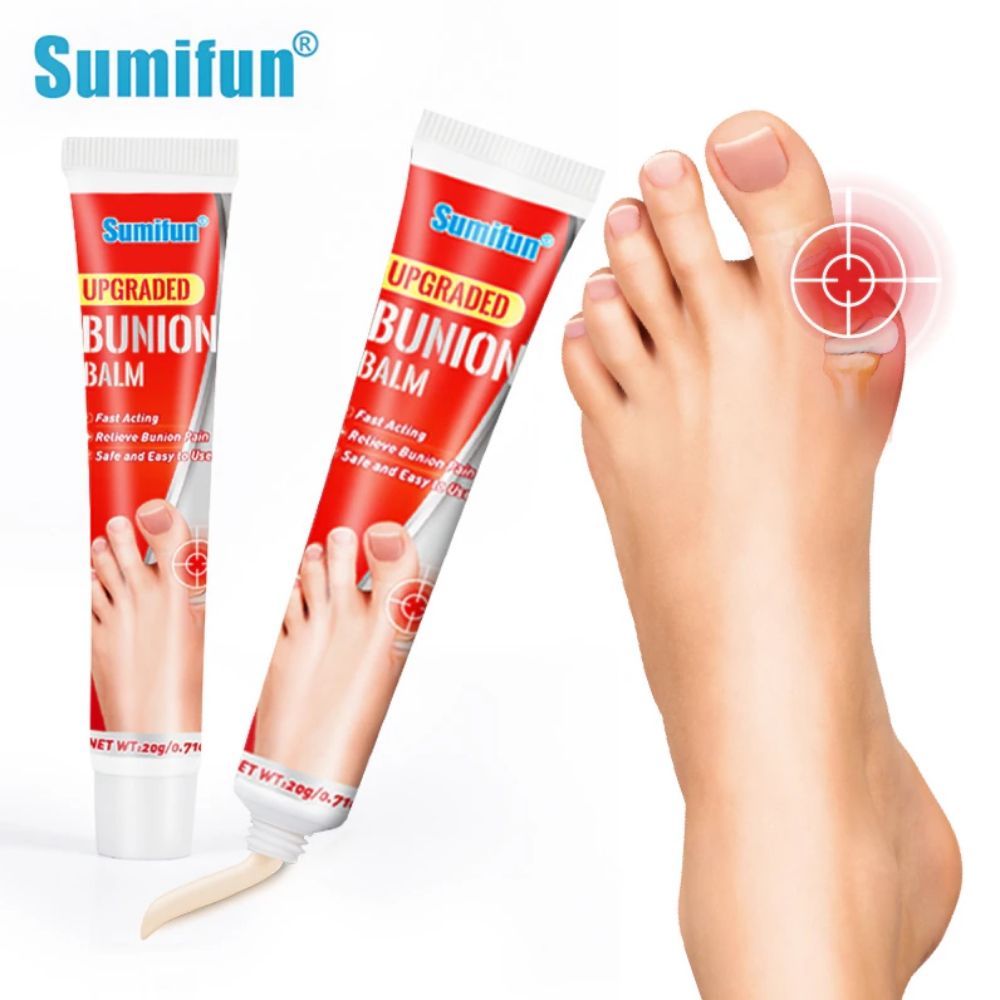
Lifestyle Modifications to Manage Foot Arthritis Symptoms
Making certain lifestyle changes can significantly impact the management of foot arthritis:
Activity Modification
Identify activities that trigger symptom flare-ups and try to minimize them. Replace high-impact exercises like jogging with low-impact alternatives such as swimming or cycling.
Weight Management
Maintaining a healthy weight is crucial in reducing stress on your joints. Even small weight losses can lead to significant improvements in foot arthritis symptoms.
Dietary Considerations
While there’s no specific “arthritis diet,” some dietary changes may help manage symptoms:
- Increase intake of anti-inflammatory foods (e.g., fatty fish, nuts, berries)
- Reduce consumption of processed foods and refined sugars
- Stay hydrated to support joint health
- Consider supplements like glucosamine and chondroitin (consult your doctor first)
Stress Management
Chronic stress can exacerbate arthritis symptoms. Incorporate stress-reduction techniques such as:
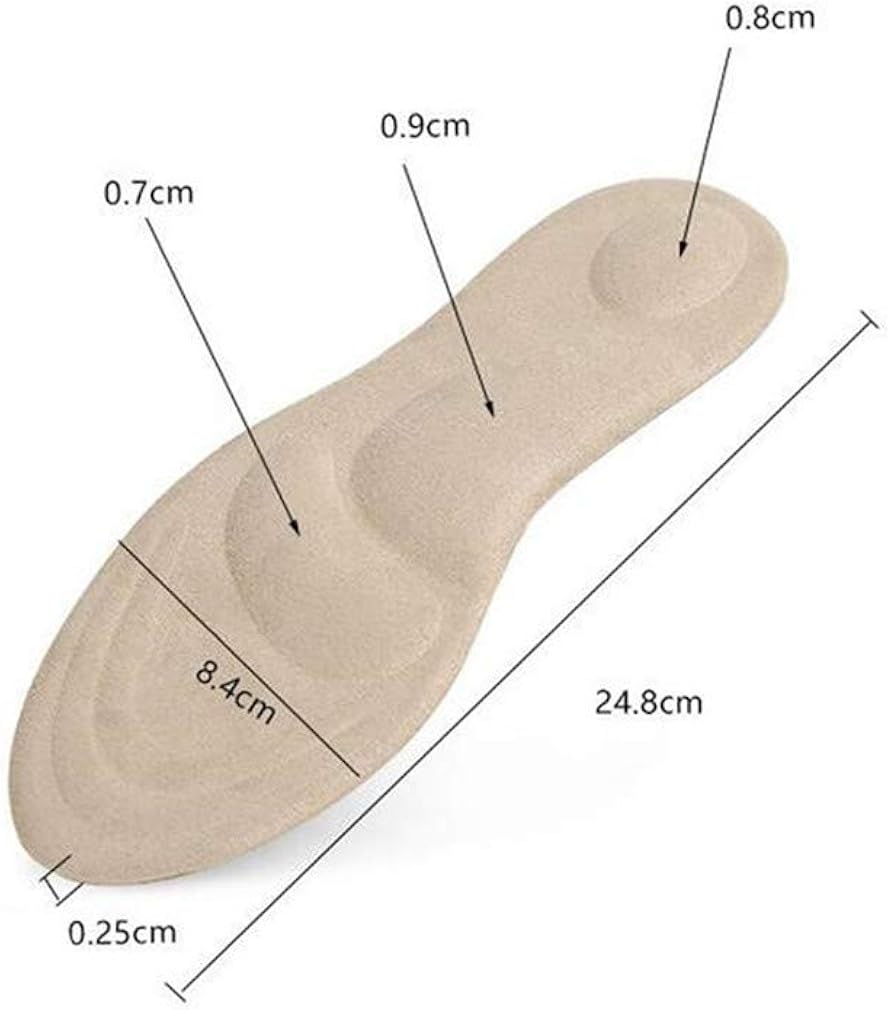
- Meditation
- Deep breathing exercises
- Yoga (modified for foot arthritis)
- Regular sleep habits
How does stress affect foot arthritis symptoms? Stress can increase inflammation in the body, potentially worsening arthritis pain and stiffness. Additionally, stress may lead to poor sleep quality, which can further exacerbate symptoms. Managing stress through relaxation techniques and lifestyle modifications can help break this cycle and improve overall well-being.
Navigating Daily Life with Foot Arthritis: Practical Tips and Adaptations
Living with foot arthritis requires some adjustments to daily routines. Here are some practical tips to help manage the condition:
Home Modifications
- Use non-slip mats in the bathroom and kitchen
- Install handrails on stairs and in the shower
- Consider a raised toilet seat to reduce strain on joints
- Use a reacher or grabber tool to avoid bending
Work Accommodations
If your job involves long periods of standing or walking, consider:
- Using an anti-fatigue mat at your workstation
- Taking regular breaks to sit and elevate your feet
- Discussing potential accommodations with your employer (e.g., a sit-stand desk)
Travel Tips
Traveling with foot arthritis requires some planning:
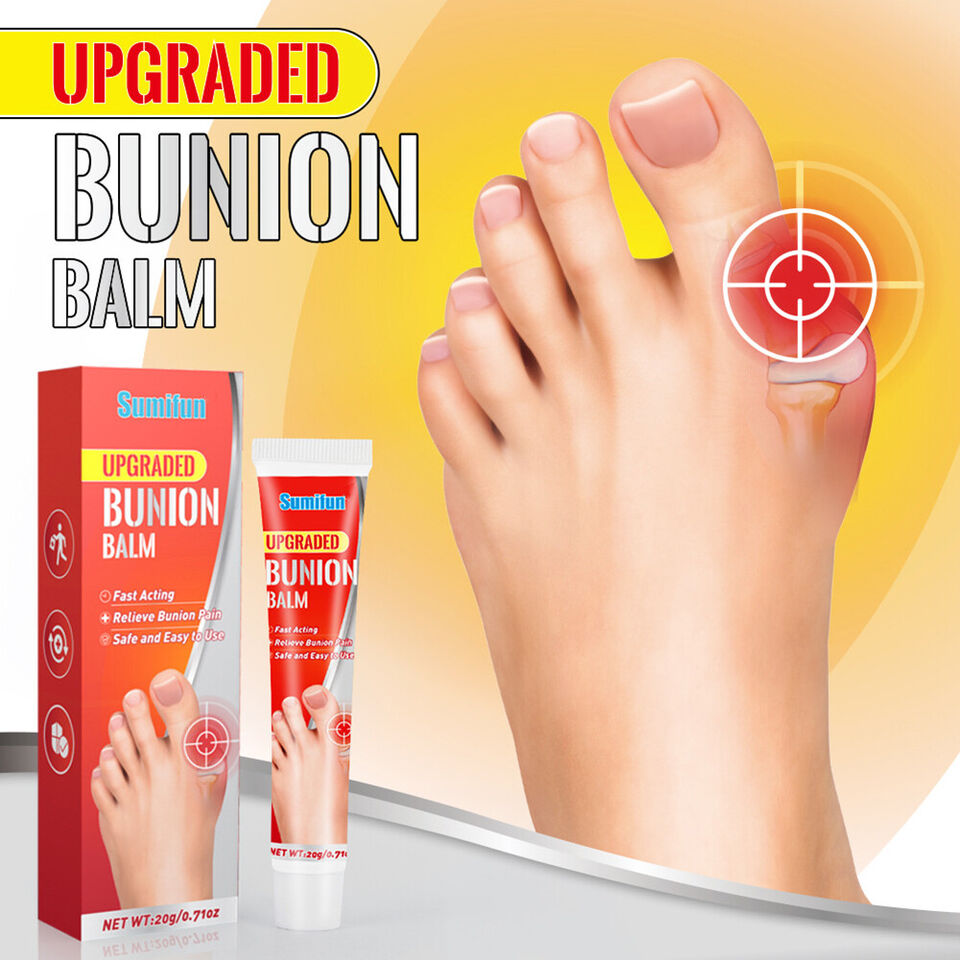
- Request an aisle seat on planes for easier movement
- Use a wheeled suitcase to avoid carrying heavy bags
- Pack comfortable shoes and any necessary orthotic devices
- Consider using airport assistance services if needed
Social Activities
Don’t let foot arthritis limit your social life:
- Choose venues with adequate seating and easy access
- Inform friends about your condition and any limitations
- Consider using a mobility aid for longer outings
- Plan activities that don’t require extensive walking or standing
How can you maintain an active social life with foot arthritis? Communication is key. Be open with friends and family about your condition and any limitations. Plan activities that accommodate your needs, such as seated gatherings or shorter outings with plenty of rest breaks. Remember, staying socially active is important for both mental and physical health.
The Future of Foot Arthritis Treatment: Emerging Research and Technologies
The field of foot arthritis treatment is continually evolving, with promising developments on the horizon:

Regenerative Medicine
Stem cell therapy and platelet-rich plasma (PRP) injections are being studied for their potential to regenerate damaged cartilage and reduce inflammation in arthritic joints.
Targeted Drug Therapies
Researchers are working on developing more precise medications that target specific inflammatory pathways involved in arthritis, potentially offering better symptom control with fewer side effects.
Advanced Imaging Techniques
New imaging technologies, such as high-resolution MRI and molecular imaging, may allow for earlier detection and more accurate monitoring of arthritis progression.
3D-Printed Orthotics and Prosthetics
Customized 3D-printed orthotics and joint replacements could offer more precise fit and better outcomes for individuals with foot arthritis.
Wearable Technology
Smart shoes and insoles equipped with sensors could provide real-time feedback on gait and pressure points, helping to optimize treatment and prevent further joint damage.
What role might artificial intelligence play in foot arthritis management? AI could potentially revolutionize arthritis care by analyzing vast amounts of patient data to predict disease progression, optimize treatment plans, and even assist in surgical planning for joint replacements. However, these applications are still in the early stages of development and require further research and validation.
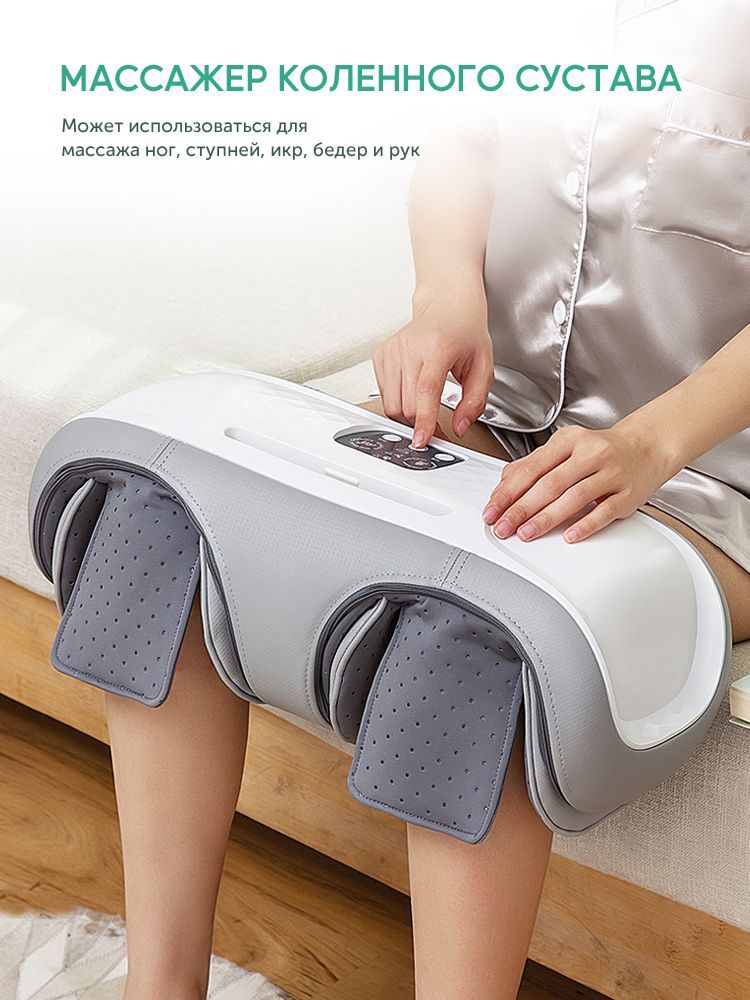
As research continues to advance our understanding of foot arthritis, new treatments and technologies offer hope for improved management and quality of life for those affected by this condition. While current treatments can effectively manage symptoms for many individuals, ongoing studies promise even more targeted and personalized approaches in the future.
Symptoms, Causes, Diagnosis, and Treatments
As you get older, you have a higher risk of arthritis. The joint damage from this condition can cause swelling, pain, and physical changes in your feet and ankles.
Foot and Ankle Arthritis Types
Arthritis is a general term for a group of more than 100 diseases. It can involve inflammation and swelling in and around your joints and the nearby soft tissue.
With many kinds of arthritis, your joints wear down over time. You slowly lose the smooth “cushioning” cartilage inside them. As a result, your bones rub and wear against each other. Soft tissues in your joints also may begin to wear down. After some time, the joint might not work or move the way it should.
Several types of arthritis can cause pain in your feet and ankles, including:
- Osteoarthritis, or “wear-and-tear” arthritis, is the most common type. Doctors also call it degenerative joint disease or age-related arthritis. Osteoarthritis usually causes changes over many years.
 The foot and ankle joints where it’s most common are:
The foot and ankle joints where it’s most common are:- The three joints involving your heel bone, your inner mid-foot bone, and your outer mid-foot bone
- The joint of your big toe and foot bone
- The joint where your ankle and shinbone meet
- Rheumatoid arthritis is one of the most serious forms. It’s an autoimmune disease in which your immune system attacks the joint. It usually happens in the same joint on both sides of your body.
- Gout happens when you have a buildup of uric acid from your diet. It’s most common in your big toe because it’s the farthest body part from your heart.
- Psoriatic arthritis can happen in one or more joints, including your ankles and the ends of your toes. It may also cause toe swelling called dactylitis.
- Post-traumatic arthritis happens after an injury, especially a dislocation or bone fracture. You might not notice problems for years.

Foot and Ankle Arthritis Symptoms
Symptoms of foot and ankle arthritis often include:
- Tenderness when you touch the joint
- Pain when you move it
- Trouble moving, walking, or putting weight on it
- Joint stiffness, warmth, or swelling
- More pain and swelling after you rest, such as sitting or sleeping
Foot and Ankle Arthritis Diagnosis
Your doctor will ask about your medical history and do tests that might include:
Foot and Ankle Arthritis Treatment
Depending on your symptoms and what’s causing your arthritis, you might have one or more of these treatments:
- Steroid medications injected into your joints
- Anti-inflammatory drugs to help with swelling
- Pain relievers
- Pads or arch supports in your shoes
- Canes or braces for support
- Shoe inserts that support your ankle and foot (orthotics)
- Physical therapy
- Custom-fitted shoes
Surgery for foot and ankle arthritis
Some people need at least one kind of surgery to treat foot and ankle arthritis. Your doctor will suggest the treatment that’s best for you. Surgeries for arthritis include:
Your doctor will suggest the treatment that’s best for you. Surgeries for arthritis include:
- Fusion surgery. This is also called arthrodesis. It involves fusing bones together with rods, pins, screws, or plates. After they heal, the bones remain joined.
- Joint replacement surgery. This is mostly used in severe cases. Your doctor may call it arthroplasty. They’ll take out damaged bone and cartilage and replace it with metal or plastic.
Home Remedies for Foot Arthritis Pain
When you have arthritis in your foot or ankle, one of the most important things is to wear comfortable shoes. Look for these details:
- Shoes shaped like your foot
- Shoes with good support (for example, no slip-ons)
- Rubber soles for more cushioning
- Flexibility
- Proper fit; ask a salesperson for help
Exercise can help keep your feet strong, flexible, and pain-free. Moves that can be good for your feet include:
- Achilles stretch.
 Face a wall with your palms flat against it. Step one foot forward and one foot back. Lean forward, keeping your heels on the floor. Feel the pull in the Achilles tendon and calf of your rear leg. Hold for 10 seconds. Repeat this exercise three times on each side.
Face a wall with your palms flat against it. Step one foot forward and one foot back. Lean forward, keeping your heels on the floor. Feel the pull in the Achilles tendon and calf of your rear leg. Hold for 10 seconds. Repeat this exercise three times on each side. - Big-toe stretch. Put a thick rubber band around your big toes. Use your muscles to pull them away from each other and toward your other toes. Hold this position for 5 seconds. Repeat 10 times.
- Toe pull. Put a rubber band around the toes of each foot, and spread your toes. Hold this position for 5 seconds, and repeat the exercise 10 times.
- Toe curl. Pick up marbles with your toes.
Other home remedies for arthritis are:
Lifestyle Changes for Foot Arthritis
A few changes to your daily life can help you feel better and may keep your arthritis from getting worse.
- If a certain activity triggers a flare-up of symptoms, try to keep it to a minimum.

- Instead of high-impact exercises like jogging, do low-impact ones like swimming or cycling.
- Keep a healthy weight so your joints aren’t under as much stress.
What Works and What Doesn’t
Anyone who’s experienced a gout attack knows it can be excruciating, causing red, hot, painful, and swollen joints. Gout, a form of arthritis, typically affects the joints in the feet, ankles, or knees; around half the time it strikes in the big toe, which can make it impossible to wear shoes. Even the light fabric of a sock can be aggravating.
Because the pain from a gout attack can be so bad, people with the condition will often try anything out there to get relief, which has led to a boom in so-called gout home remedies.
While there are a few legitimate home remedies for gout out there, prescription medications remain the mainstay for treating gout, during an acute attack as well as over the long term to reduce gout attacks in the first place.
This Is Your Body During a Gout Attack
Gout symptoms occur when excess uric acid in your body forms crystals in the joints. The body treats these crystals like a foreign body and attacks them with white blood cells. The white cells, in turn, release inflammatory chemicals called cytokines into the joint fluid. The cytokines bring in more white cells, and on it goes.
“The joint becomes a battlefield,” says Theodore Fields, MD, professor of clinical medicine at Weill Cornell Medical College and a rheumatologist the Hospital for Special Surgery in New York City.
The Best Way to Treat a Gout Attack
Gout attacks can last for up to 10 days or longer and often subside on their own after a week or two, but medications will speed up healing and prevent future flares.
Standard medical treatments for a gout attack include:
- Anti-inflammatory drugs like naproxen (which can be purchased over the counter or in prescription strength)
- Colchicine, which reduces uric acid build-up
- Steroids, such as prednisone
For 98 percent of patients, says Dr.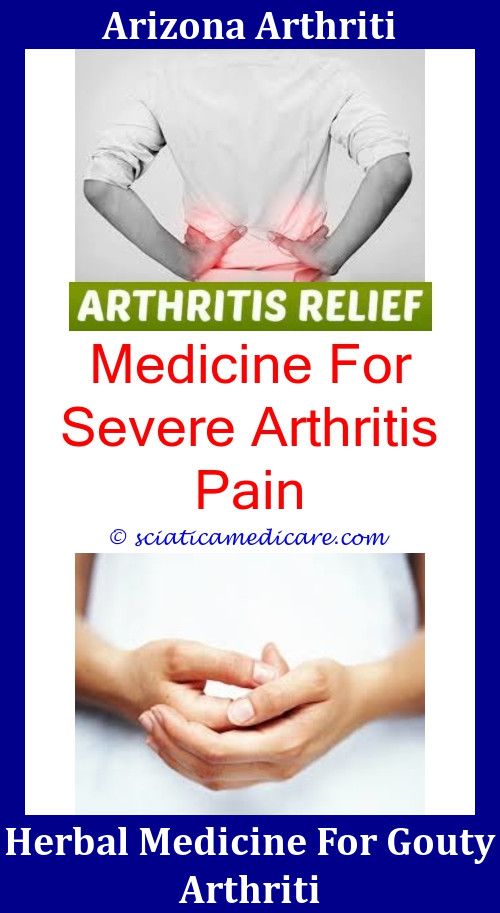 Fields, one of these medications these will knock out an attack.
Fields, one of these medications these will knock out an attack.
Home Remedies for Instant Gout Relief
There are a couple of effective home remedies for a gout attack that you can use as an adjunct to medications. These include:
- Resting the joint
- Using ice packs to reduce swelling
- Drinking cherry juice
Cherry juice is high in vitamin C, which makes uric acid come out in the urine, but the effect is mild compared to some of the available medicines for gout attacks. Cherry juice can also increase the risk of kidney stones; they shouldn’t be used in anyone who is predisposed to them.
Dr. Fields cautions against relying solely on home remedies to relieve gout pain fast instead of taking medicine because the longer you wait, the longer it will take for your gout to get better.
“The good thing about treating a sudden gout attack with drugs right away is that you can take the medication for a very short time,” he says. “You should see a 50 percent improvement within 24 hours of treating an attack.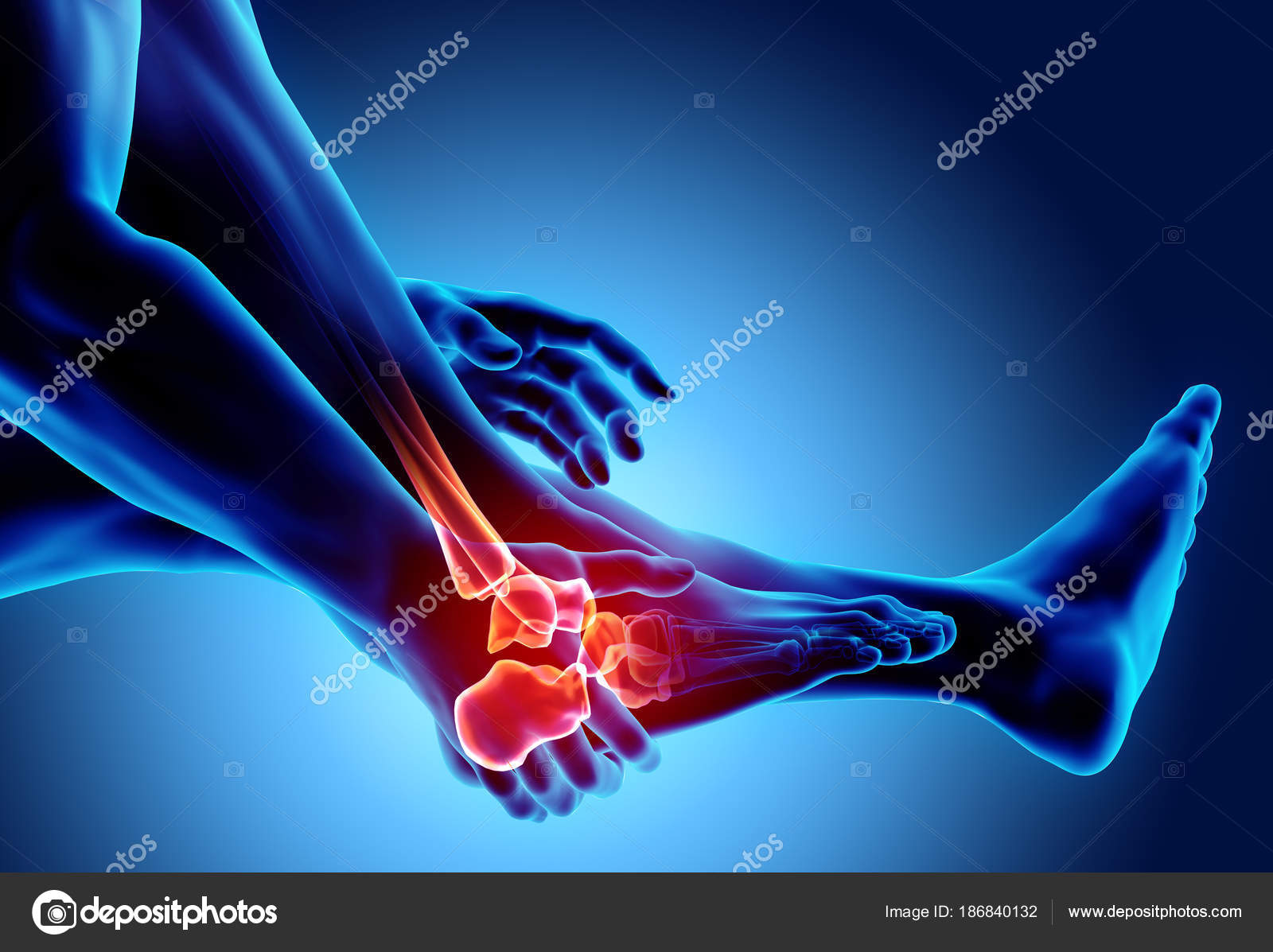 If you’re not seeing that kind of improvement, you need to re-think what you’re doing and consult with your doctor about a different approach.”
If you’re not seeing that kind of improvement, you need to re-think what you’re doing and consult with your doctor about a different approach.”
Home Remedies for Long-Term Gout Relief
The American College of Rheumatology recommends a couple of lifestyle modifications for preventing future attacks of gout:
1) Lose weight if you need to. Being overweight can increase uric acid levels as well as put pressure on the joints.
2) Follow a low-purine diet. Another effective way to reduce uric acid levels is to follow a low-purine diet. Purines are organic compounds that break down into uric acid. Following a low-purine diet means avoiding “the big four” — alcohol, shellfish, red meat, and high fructose corn syrup.
Limiting these foods is also beneficial for heart health — and people with gout are at higher risk for heart disease.
But don’t go overboard with dietary changes to relieve gout pain though, advises Dr. Fields. “You can find lists of thousands of different foods you’re not supposed to have if you have gout. Those recommendations are impossible to follow and can make you crazy.”
Fields. “You can find lists of thousands of different foods you’re not supposed to have if you have gout. Those recommendations are impossible to follow and can make you crazy.”
How to Handle Your First Gout Attack
After a first attack of gout, it’s OK to try to stave off another one with dietary changes alone. But if you have another attack, it’s important to start taking preventive gout medications on a regular basis. Long-term medications for gout include allopurinol and febuxostat, both of which limit uric acid production.
Some patients, says Dr. Fields, treat each attack as a separate event and don’t talk to their doctors about doing a preventive approach. He uses the analogy of lighting a book of matches. “If you have one match lit, it’s easy to put out, but if you have the whole book lit, it’s a lot harder.”
Take Caution with Supplements for Gout
As for the many supplements and other purported home remedies available for gout, including turmeric and bromelain, there is no significant evidence backing them up as of now, and there’s no adequate evidence showing that supplements have any effect even comparable to that of medicines.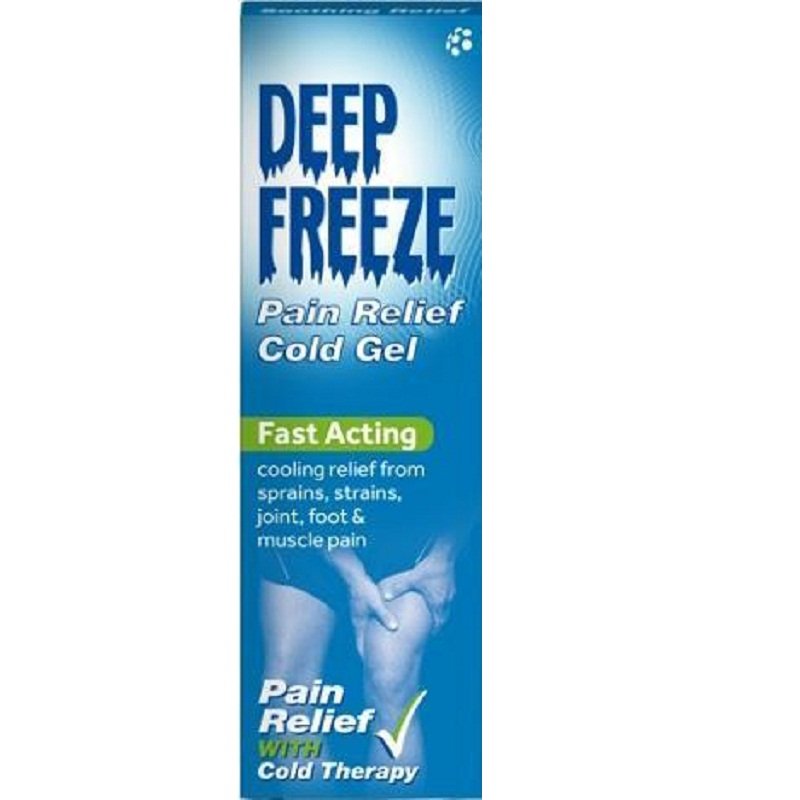
“From my point of view,” says Dr. Fields, “the home remedy concept to gout is often harmful because it keeps patients from taking medications that we know are effective.”
Keep Reading:
What Are Rheumatoid Nodules?
If you have rheumatoid arthritis (RA) and you’ve noticed firm or doughy bumps forming on your joints, you may be one of the approximately 25 percent of RA patients who develop something called rheumatoid nodules. Why rheumatoid nodules occur is largely a mystery, but the good news is that they’re becoming less common.
“I see far fewer patients with rheumatoid nodules than I did 20 years ago,” says Gregory C. Gardner, MD, MACP, a professor in the division of rheumatology at the University of Washington. “That’s due to the new, highly effective medications we now have to treat RA.”
Here, he answers questions RA patients commonly have about rheumatoid nodules.
What Do Rheumatoid Nodules Look Like?
Rheumatoid nodules are usually round and can be as small as a pea or as large as a lemon, according to the American Osteopathic College of Dermatology. “You see rheumatoid nodules most often on the hands and elbows, though they sometimes appear on the heels and toes,” Dr. Gardner says. “It feels like you have pebbles in your shoe.”
“You see rheumatoid nodules most often on the hands and elbows, though they sometimes appear on the heels and toes,” Dr. Gardner says. “It feels like you have pebbles in your shoe.”
Rheumatoid nodules can also appear in the eyes, vocal cords, and lungs, but this happens rarely, he adds. (Read more about how arthritis affects the lungs here.)
Do Rheumatoid Nodules Hurt?
Rheumatoid nodules are typically painless, though they may become painful during an arthritis flare. Depending on their location, rheumatoid nodules can become bothersome; for example, nodules on your heel could make walking difficult. They can also become ulcerated or infected, but that’s not a common occurrence, Dr. Gardner says. (Read more about how arthritis can affect your feet here.)
Why Do Rheumatoid Nodules Occur in the First Place?
Scientists can’t explain that yet, nor do they understand why these nodules aren’t seen in other forms of inflammatory arthritis, like psoriatic arthritis or ankylosing spondylitis.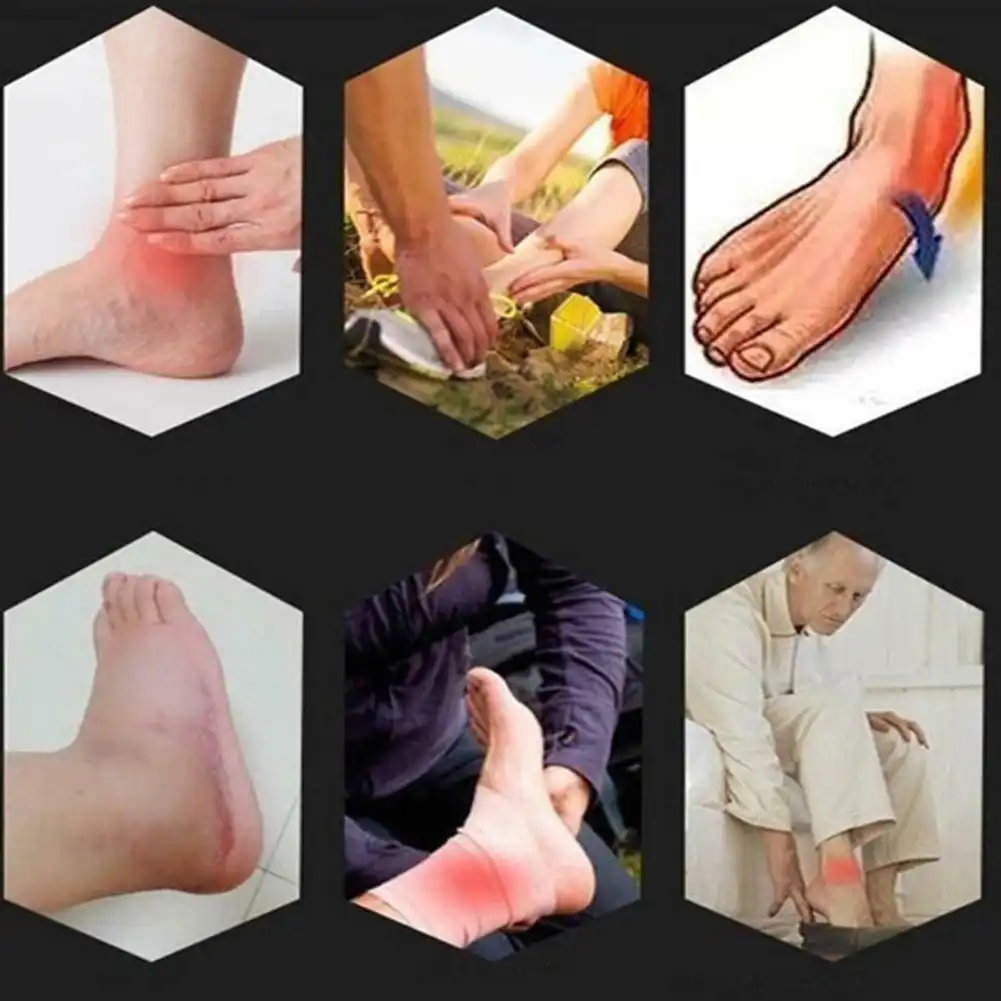 However, it is known that taking methotrexate can sometimes cause methotrexate-induced nodulosis, in which tiny micronodules form rapidly around the joints in your fingers. If that happens, your rheumatologist will likely switch you to a different medication. Here are more common questions patients ask about taking methotrexate.
However, it is known that taking methotrexate can sometimes cause methotrexate-induced nodulosis, in which tiny micronodules form rapidly around the joints in your fingers. If that happens, your rheumatologist will likely switch you to a different medication. Here are more common questions patients ask about taking methotrexate.
“The nodules generally disappear when you change drugs,” Dr. Gardner says. “Rituximab is often used in this situation because it’s very effective at getting rid of them.”
Who Is Most Likely to Develop Rheumatoid Nodules?
They’re most commonly seen in people who have more severe RA. “They’re actually a marker of severe disease,” Dr. Gardner says. Smokers also appear to be at greater risk of developing rheumatoid nodules. And a 2016 study found that they occurred significantly more frequently in patients with longstanding disease and those who tested positive for rheumatoid factor and anti-CCP antibodies, as well as in people who take the DMARDs leflunomide and TNF-alpha antagonists.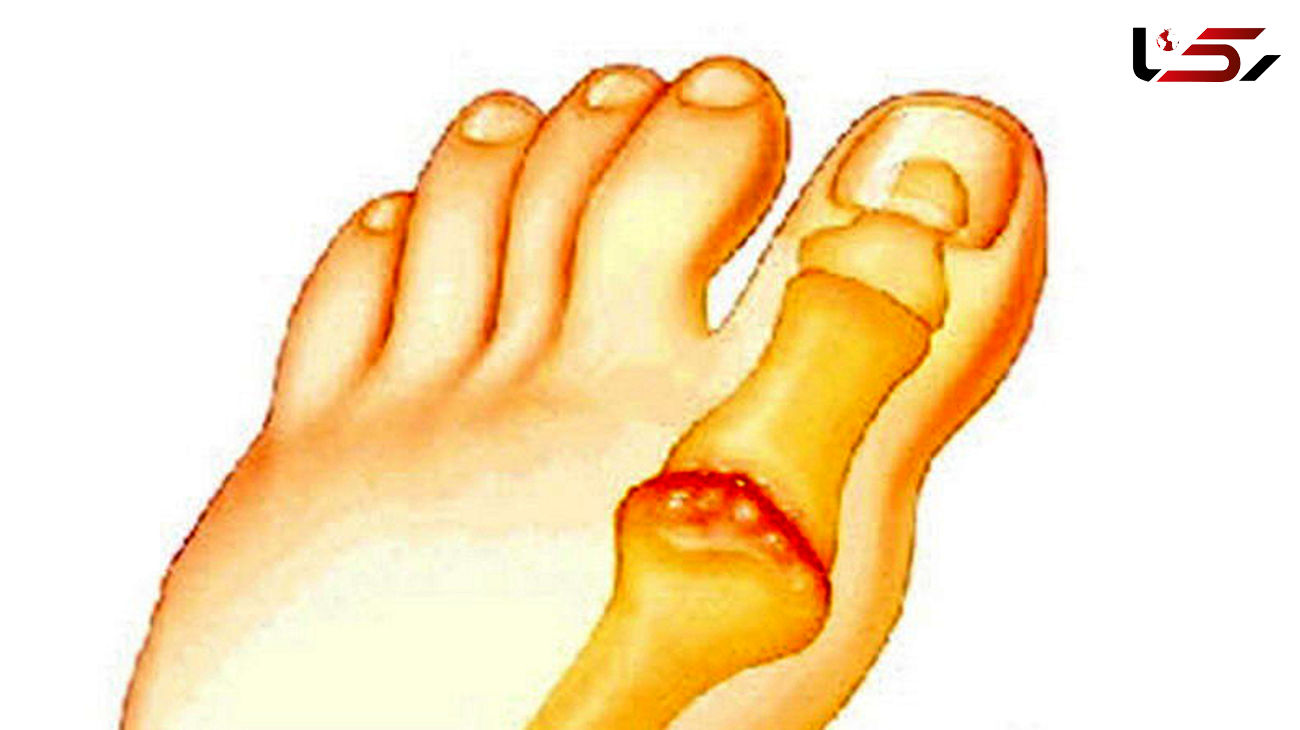
How Are Rheumatoid Nodules Treated?
Since rheumatoid nodules aren’t painful or dangerous, they don’t need to be treated at all. In fact, sometimes the nodules go away on their own. But if yours are inhibiting your mobility — or if their appearance bothers you — there are ways to shrink them. “Often, we’ll start by switching medications to see if that helps,” Dr. Gardner says. “Injecting the nodules with corticosteroids can also reduce their size.”
Rheumatoid nodules can also be surgically removed, though surgery is generally reserved for people who have infected nodules or ones that limit their ability to use the affected joints. There is a chance the nodules could grow back, though.
Keep Reading
Arthritis Pain Relief and Shoe Inserts
When your feet hurt, it’s hard to think about anything else, and everyday activities that involve standing or walking for more than a few minutes can become overwhelming. Making good shoe choices can prevent problems, but for many of those who are already suffering, orthotics – shoe inserts designed to ease foot pain and correct structural issues – may provide much-needed relief.
Making good shoe choices can prevent problems, but for many of those who are already suffering, orthotics – shoe inserts designed to ease foot pain and correct structural issues – may provide much-needed relief.
How Shoe Inserts Reduce Foot Pain
Foot pain is common. One in four adults have a problem with their feet. And among people with certain types of arthritis, including rheumatoid arthritis (RA) and osteoarthritis (OA) of the knee, hip, ankle or foot, it’s even more prevalent.
Foot discomfort and structural problems such as the hammertoes and bunions caused by the inflammation of RA and lupus also can spread beyond the feet, leading to shin pain, knee pain and lower back pain.
Orthotics redistribute weight and relieve pressure on sensitive areas of the feet, provide cushioning that reduces stress, or biomechanical load, on the lower body, and correct gait and structural abnormalities, says Marian Hannan, associate professor of medicine at Harvard Medical School and co-director of Musculoskeletal Research at the Harvard-affiliated Institute for Aging in Boston.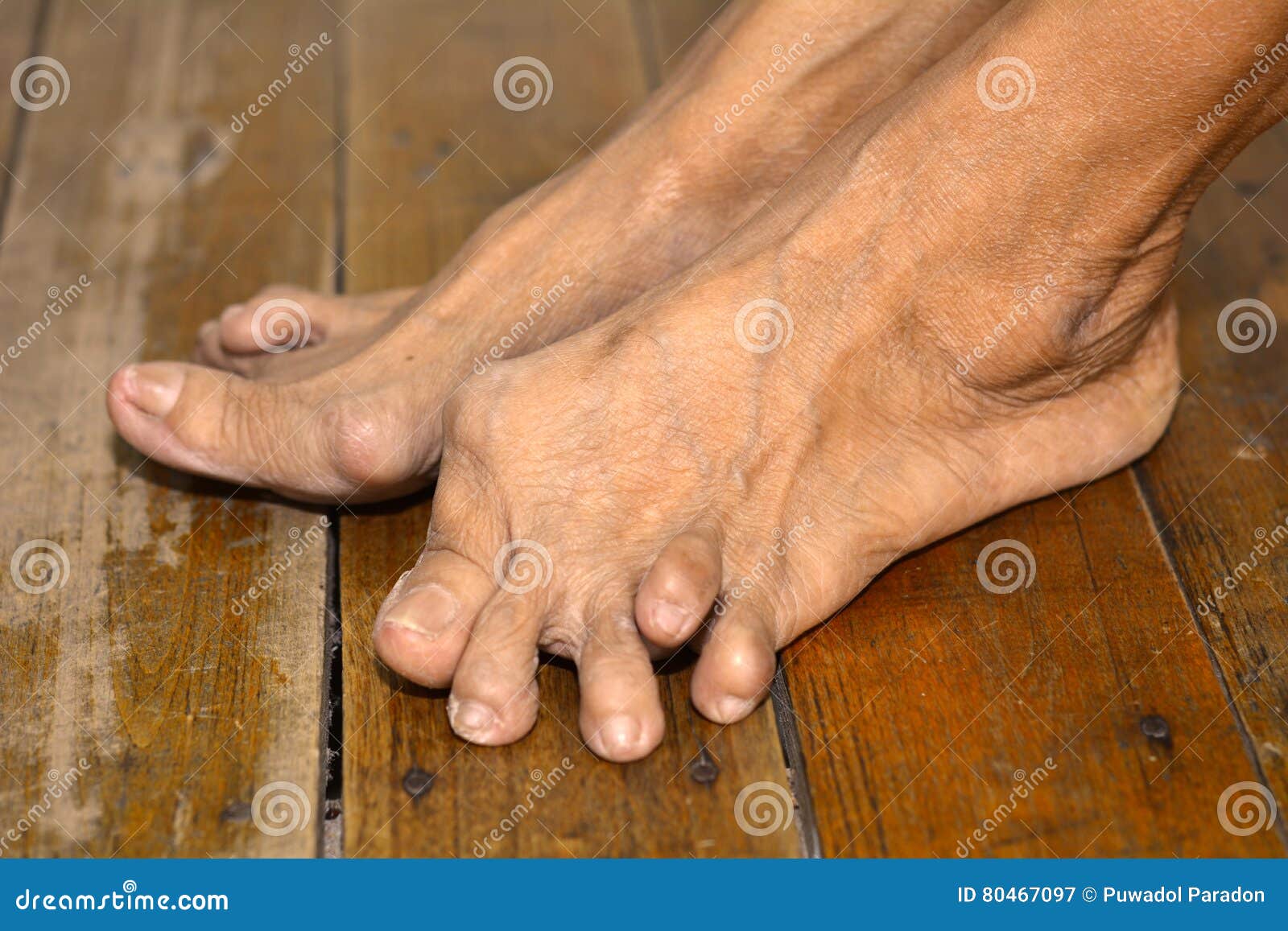
“The best evidence of benefits with orthotics is for reducing foot pain in people with RA and lower extremity OA, Hannan says, noting, “The right insert may also help slow damage caused by knee OA.”
Research on orthotics and the progression of knee OA are mixed. Although most studies find that people who wear orthotics have less foot pain and need fewer pain-relieving medications, some also suggest custom-made inserts can lead to long-term changes in biomechanics that may slow or prevent the progression of arthritis, says Hannan.
“It’s not entirely clear how orthotics work to cause these positive changes, but data suggests the inserts affect the foot’s very fine, or micro-, control of gait, subtly altering muscle activity and reducing stress on the lower extremity,” she says.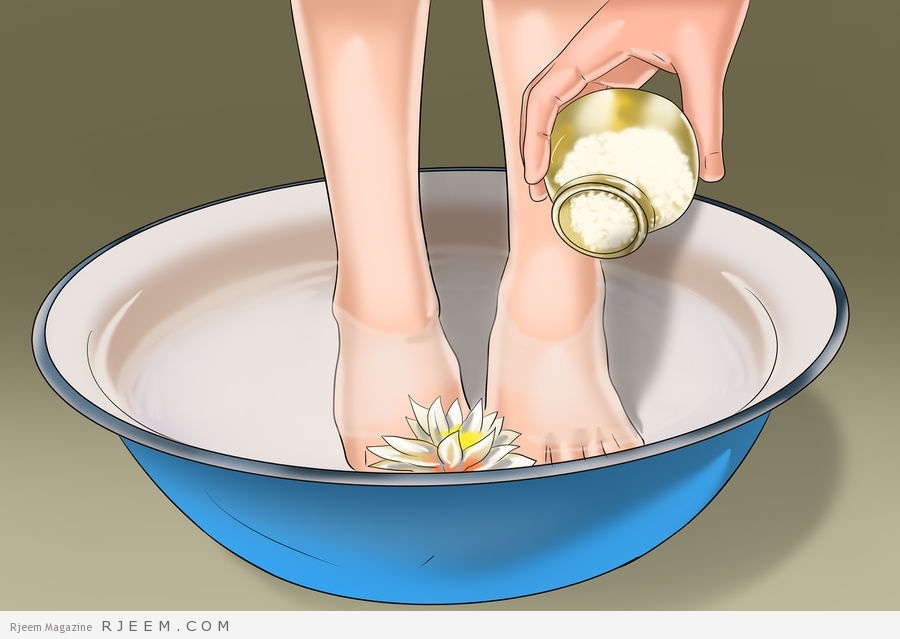
Custom Orthotics for Arthritis and Related Conditions
A Cochrane Review, which provided a systematic analysis of several randomized-control trials, found gold- and silver-level evidence that custom-made orthotics reduce foot pain in people with:
Bunions
Painful high arches
Juvenile idiopathic arthritis
Plantar fasciitis, or heel pain
More research needs to be done to discover specific benefits, including how long different people need to wear orthotics before feeling improvements, Hannan says.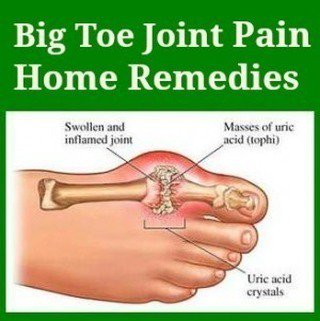 She notes that, anecdotally, “We can tell by the prevalence of people who continue to wear orthotics months and years after filling their prescription that they feel that the inserts are helping.”
She notes that, anecdotally, “We can tell by the prevalence of people who continue to wear orthotics months and years after filling their prescription that they feel that the inserts are helping.”
Your doctor can determine whether orthotics could be a good option for you and refer you to a podiatrist who will examine your feet, ankles and hips and evaluate your gait by observing your body in motion.
Custom inserts, which last about five years, can cost between $400 and $800 a pair, and not all insurance plans cover them. As a less-expensive option, some podiatrists may customize off-the-shelf inserts to address your specific issues.
Arthritis of the Foot and Ankle
What Is Arthritis of the Foot and Ankle?
The pain and stiffness you feel in your feet and ankles as you age could be arthritis. If left untreated, this nagging pain can get worse over time, eventually making it difficult to walk even short distances. Severe arthritis can restrict your mobility,
Severe arthritis can restrict your mobility,
but with proper treatment, you can minimize the pain and maximize your quality of life.
Arthritis is a broad term for a number of conditions that destroy the workings of a normal joint. Arthritis may occur in your back, neck, hips, knees, shoulders or hands, as well as your feet and ankles. Almost half of people in their 60s and 70s have
arthritis of the foot and/or ankle, but not all of them have symptoms.
There are many different types of arthritis. The most common type, osteoarthritis, results from wear and tear to joint cartilage, the cushioning between joints that allows them to glide smoothly. The damage can cause inflammation, redness, swelling, and
pain in the joint.
Also, a sudden and traumatic injury such as a broken bone, torn ligament, or moderate ankle sprain can cause the injured joint to become arthritic in the future. Sometimes a traumatic injury will lead to arthritis in the injured joint even though the joint received proper medical care at the time of injury./GettyImages-185111064-572055073df78c56400636d6.jpg) This type of arthritis, called post-traumatic
This type of arthritis, called post-traumatic
arthritis, is the most common type that affects the ankle.
Another less common type, rheumatoid arthritis,
is an inflammatory condition caused by an irritation of the joint lining. People with rheumatoid arthritis for at least 10 years almost always develop arthritis in some part of the foot or ankle.
Other types of inflammatory arthritis include gout, lupus, ankylosing spondylitis, and psoriatic arthritis.
Diagnosis
The foot has 26 bones and more than 30 joints. Tough bands of tissue called ligaments hold these together. The muscles, tendons, and ligaments work together with the many joints of the foot to control motion. When you get arthritis in the foot, you develop pain and limited motion so that you cannot walk as well.
Arthritis can develop in any of these joints but some are more commonly affected than others. A foot and ankle orthopaedic surgeon can help you locate the source of your pain and determine the best course of treatment.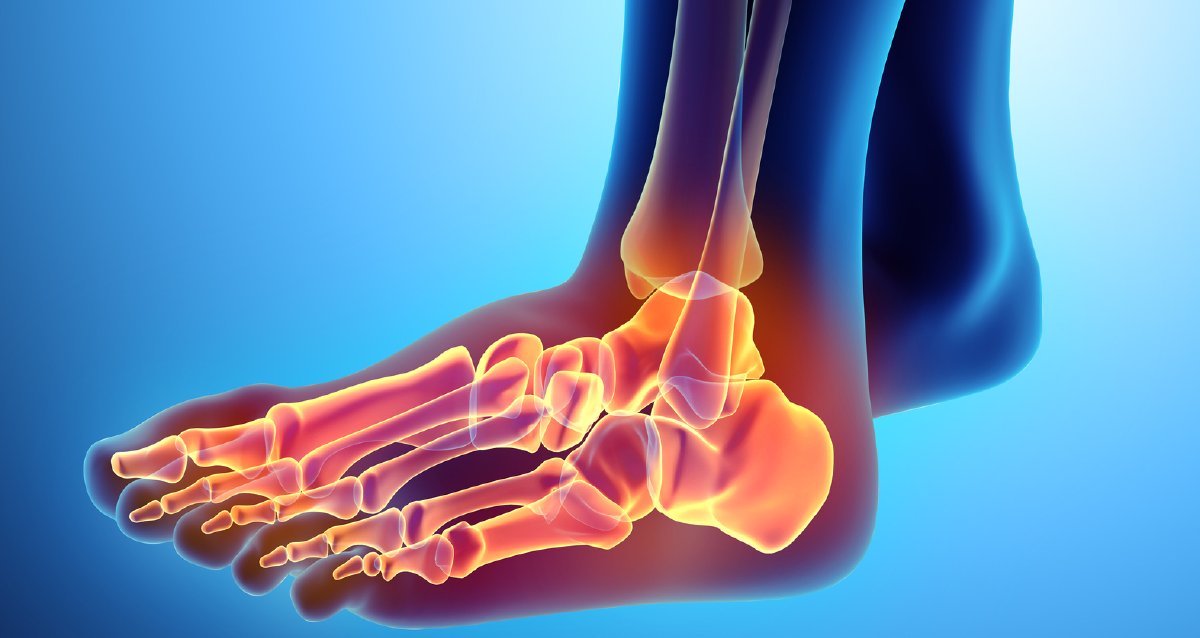
If your foot and ankle orthopaedic surgeon suspects you have arthritis, they will ask you to have a complete medical history and physical examination. X-rays and laboratory tests often can confirm the type and extent of the arthritis. Other tests
such as a bone scan, CT scan, or MRI may be used to evaluate your condition.
Treatment
Once your surgeon confirms you have arthritis, they will recommend a treatment regimen. Proper treatment of foot and ankle arthritis addresses both pain and joint deformity. In cases of trauma to the foot or ankle, cartilage can be lost or damaged,
leading to inflammation and pain. Over a lifetime of wear and tear, many patients lose cartilage in their joints, with pain only developing late in life. Pain and inflammation also can result from inflammatory arthritis, which is less common. In any
case, if left untreated, the arthritic foot and ankle eventually may become deformed.
There are no treatments that can repair damaged cartilage, but there are ways you can reduce pain and possibly slow down further damage.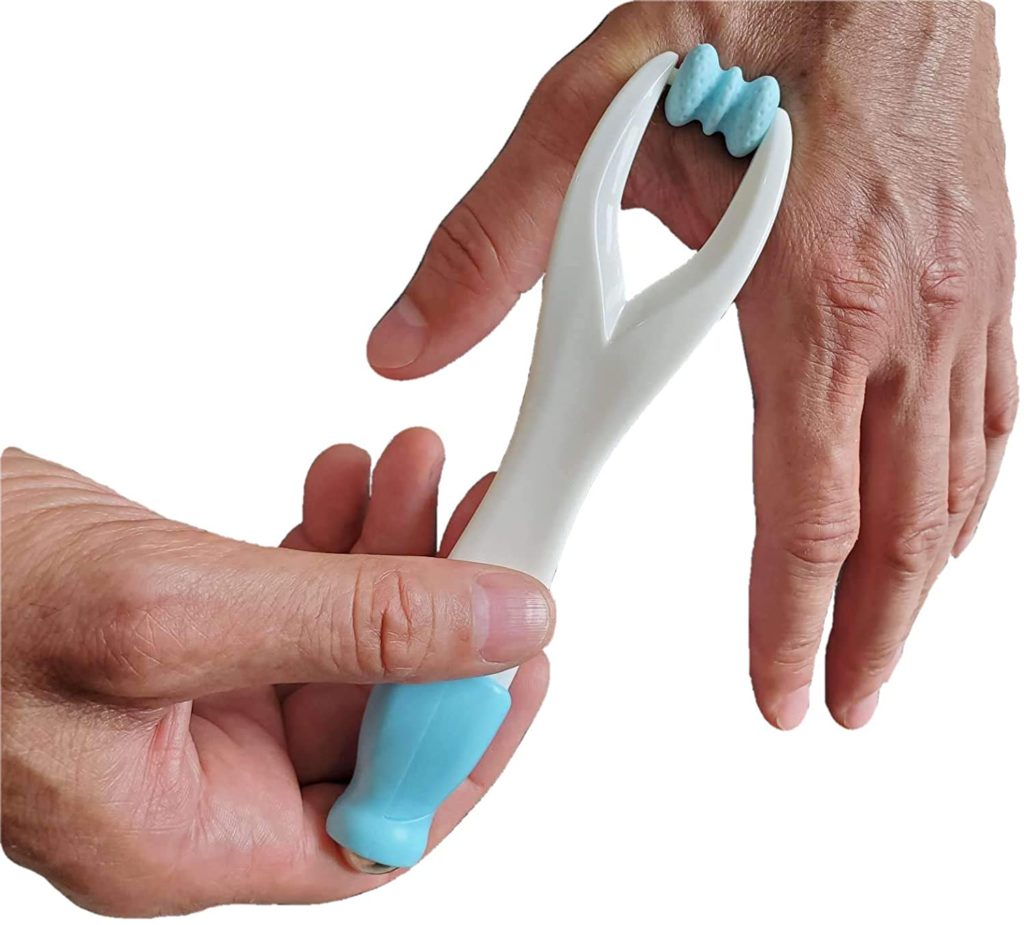
Non-surgical Treatment
Non-surgical options often include medications by mouth (anti-inflammatories), injections (steroids or other), physical
therapy, weight loss, changes in shoes, or orthotics such as pads in your shoes or custom-made braces.
Injections are a common treatment for arthritis that delivers medication directly to the affected joint. A strong anti-inflammatory called cortisone is the most commonly used medication for joint injection. Depending on the joint, alternatives to cortisone
may be used such as artificial joint lubricant (also known as viscosupplementation or hyaluronic acid) or platelet-rich plasma.
Surgical Treatment
When non-surgical treatments fail, surgery may be necessary. For mild arthritis cases, this may involve cleaning the arthritic joint by removing bone spurs that restrict motion. More often, especially with advanced arthritis, your foot and ankle orthopaedic surgeon may recommend replacing the joint with an artificial joint or fusing the joint to eliminate painful motion.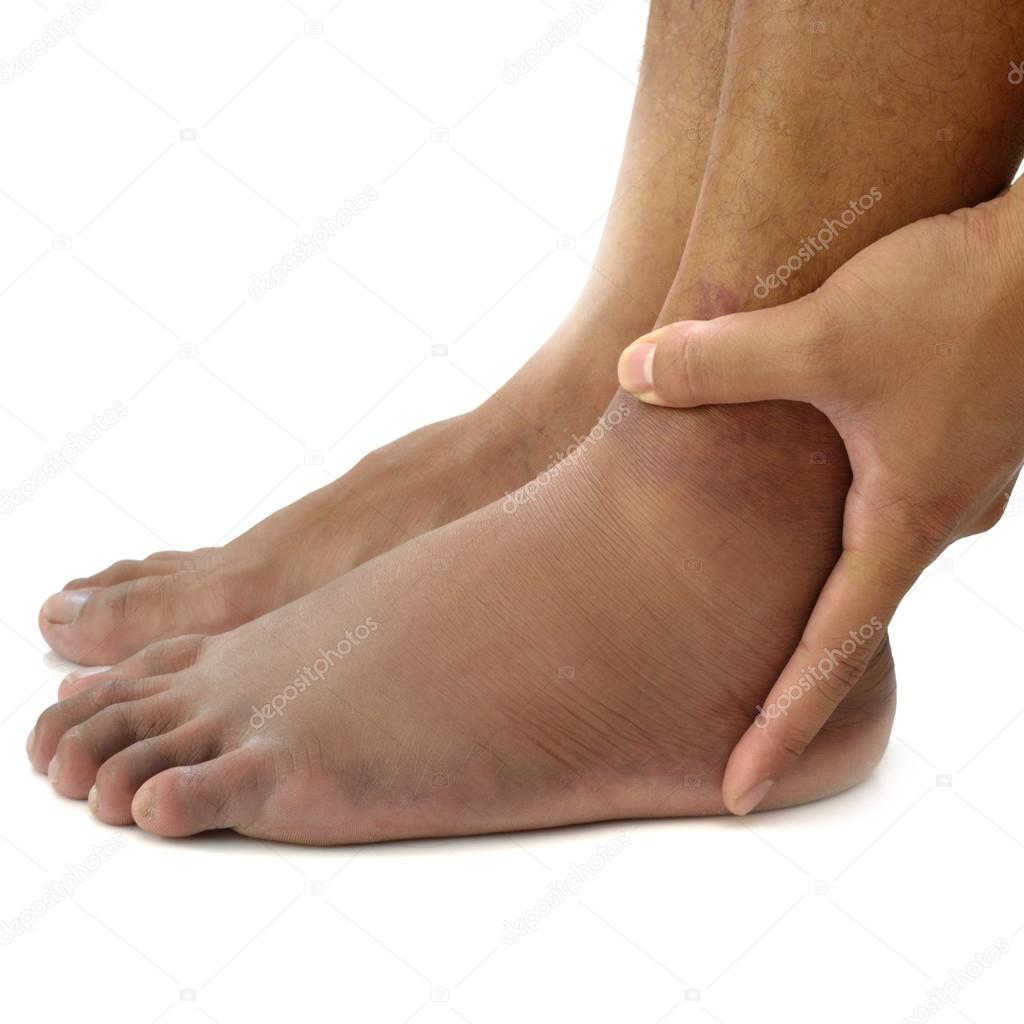
The best surgical option depends on the joint(s) involved, your activity level, and your treatment goals. Consult with your foot and ankle orthopaedic surgeon
before moving forward with any treatment.
Recovery
After surgery, you will require a period of rehabilitation when your foot might have to be in a cast and you might have to wear special shoes or braces for a while.
Who can help me with my arthritis?
A foot and ankle orthopaedic surgeon can
diagnose and treat your arthritis. In addition to your orthopaedic surgeon, other healthcare professionals may care for you, including a rheumatologist (medical arthritis specialist), physiatrist (rehabilitation specialist), pedorthist (footwear specialist),
physical therapist, orthotist (brace specialist), occupational therapist, nurse and/or clinical social worker.
Community resources also are available to people with arthritis. Local chapters of the Arthritis Foundation offer exercise programs, educational information and support
groups.
You also play an active role in your treatment. Seek treatment for arthritis as early as possible to help control pain and reduce damage to joints. Take medications as directed, exercise, control your weight, and participate in all aspects of your care.
If you have questions about the need for a test, or the risks or benefits of your treatment, ask your doctor. Even with the best treatment, arthritis of the foot and ankle may continue to cause you pain or changes in your activities. However, proper
diagnosis and treatment will help to minimize these limitations and allow you to lead a productive, active lifestyle.
Contributors/Reviewers: David Lee, MD; Elizabeth Cody, MD; John Early, MD
The American Orthopaedic Foot & Ankle Society (AOFAS) offers information on this site as an educational service. The content of FootCareMD, including text, images, and graphics, is for informational purposes only. The content is not intended to substitute
for professional medical advice, diagnoses or treatments.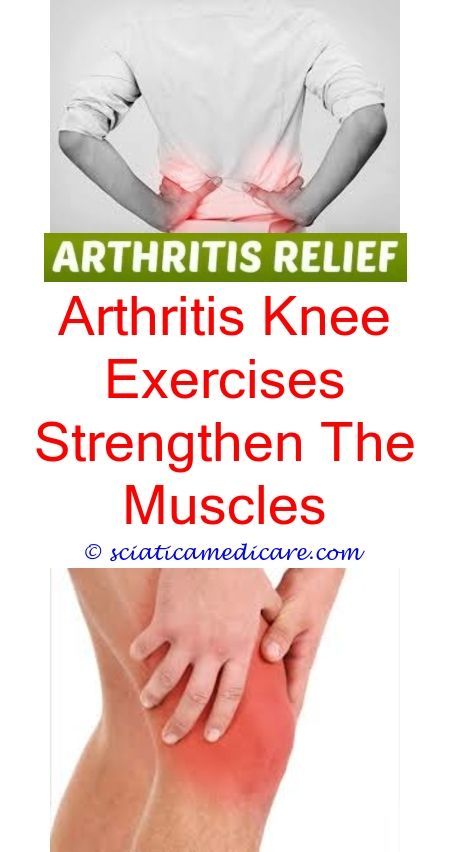 If you need medical advice, use the “Find a Surgeon” search to locate a foot and ankle orthopaedic surgeon in your area.
If you need medical advice, use the “Find a Surgeon” search to locate a foot and ankle orthopaedic surgeon in your area.
Arthritis of the Foot and Ankle: Foot Health Awareness Month
As we celebrate Foot Health Awareness in the month of April, we want to highlight various types of arthritis of the foot and ankle that can make it difficult to walk and perform activities you enjoy.
Arthritis is inflammation of one or more of your joints. It can cause pain and stiffness in any joint in the body but is common in the small joints of the foot and ankle. There are more than 100 forms of arthritis, many of which affect the foot and ankle and there is no cure for arthritis. However, there are many treatment options available to slow the progress of the disease and relieve symptoms. With proper treatment, many people with arthritis are able to manage their pain, remain active, and lead fulfilling lives.
Osteoarthritis
Osteoarthritis is the most common type of arthritis and is known as degenerative or “wear-and-tear” arthritis.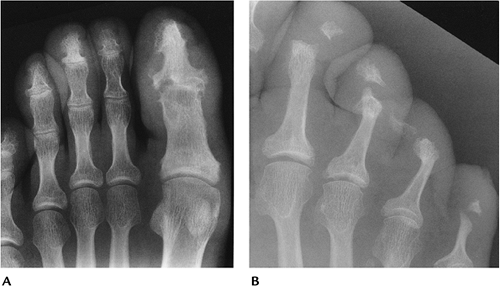 This type of arthritis is a common problem for many people after they reach middle age, but it may occur in younger people, too. In osteoarthritis, the cartilage in the joint gradually wears away. As the cartilage wears away, it becomes frayed and rough, and the protective space between the bones decreases. This can result in bone rubbing on bone and produce painful osteophytes (bone spurs). Being an inflammatory condition, arthritis is painful, can make walking nearly impossible. Osteoarthritis develops slowly, causing pain and stiffness that worsens over time. In addition to age, other risk factors for osteoarthritis include obesity and family history of the disease.
This type of arthritis is a common problem for many people after they reach middle age, but it may occur in younger people, too. In osteoarthritis, the cartilage in the joint gradually wears away. As the cartilage wears away, it becomes frayed and rough, and the protective space between the bones decreases. This can result in bone rubbing on bone and produce painful osteophytes (bone spurs). Being an inflammatory condition, arthritis is painful, can make walking nearly impossible. Osteoarthritis develops slowly, causing pain and stiffness that worsens over time. In addition to age, other risk factors for osteoarthritis include obesity and family history of the disease.
Most often arthritis begins in the great toe joint (Hallux Limitus) and also in the midfoot. In some instances, bone spurs develop due to biomechanical imbalances. If addressed early on treatment can be effective (physical therapy, custom made orthotics usage, cortisone injections). In some cases, surgery is most appropriate and beneficial.
Rheumatoid Arthritis
Rheumatoid arthritis is a chronic disease that can affect multiple joints throughout the body and often starts in the foot and ankle. It is symmetrical, meaning that it usually affects the same joint on both sides of the body. Rheumatoid arthritis is an autoimmune disease. This means that the immune system attacks its own tissues. In rheumatoid arthritis, immune cells attack the synovium covering the joint, causing it to swell. Over time, the synovium invades and damages the bone and cartilage, as well as ligaments and tendons, and may cause serious joint deformity and disability.
The exact cause of rheumatoid arthritis is not known. Although it is not an inherited disease, researchers believe that some people have genes that make them more susceptible. There is usually a “trigger,” such as an infection or environmental factor, which activates the genes. When the body is exposed to this trigger, the immune system begins to produce substances that attack the joints.
Post-traumatic Arthritis
Post-traumatic arthritis can develop after an injury to the foot or ankle. Dislocations and fractures—particularly those that damage the joint surface—are the most common injuries that lead to posttraumatic arthritis. Like osteoarthritis, posttraumatic arthritis causes the cartilage between the joints to wear away. It can develop many years after the initial injury. An injured joint is about seven times more likely than an uninjured joint to become arthritic, even if the injury is properly treated. In fact, following an injury, your body may actually secrete hormones that stimulate the death of your cartilage cells.
Symptoms
The symptoms of arthritis vary depending on which joint is affected. In many cases, an arthritic joint will be painful and inflamed. Generally, the pain develops gradually over time, although sudden onset is also possible. There can be other symptoms, as well, including:
- Pain with motion
- Pain that flares up with vigorous activity
- Tenderness when pressure is applied to the joint
- Joint swelling, warmth, and redness
- Increased pain and swelling in the morning, or after sitting or resting
- Difficulty in walking due to any of the above symptoms
Treatment
There is no cure for arthritis but there are a number of treatments that may help relieve the pain and disability it can cause.
Nonsurgical Treatment: Initial treatment of arthritis of the foot and ankle is usually nonsurgical. Your doctor may recommend a range of treatment options.
Lifestyle modifications: Some changes in your daily life can help relieve the pain of arthritis and slow the progression of the disease. These changes include:
- Minimizing activities that aggravate the condition.
- Switching from high-impact activities (like jogging or tennis) to lower impact activities (like swimming or cycling) to lessen the stress on your foot and ankle.
- Losing weight to reduce stress on the joints, resulting in less pain and increased function.
Physical therapy: Specific exercises can help increase range of motion and flexibility, as well as help strengthen the muscles in your foot and ankle. Your doctor or a physical therapist can help develop an individualized exercise program that meets your needs and lifestyle.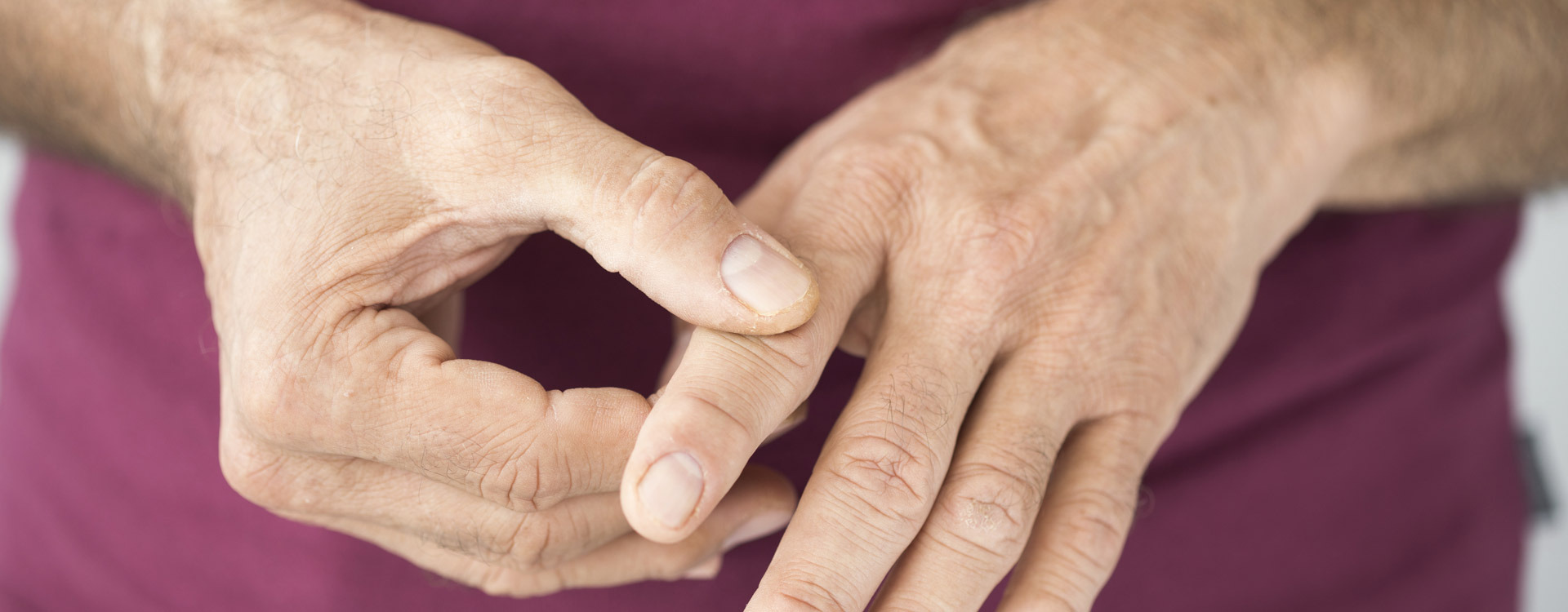 Although physical therapy often helps relieve stress on the arthritic joints, in some cases it may intensify joint pain. This occurs when movement creates increasing friction between the arthritic joints. If your joint pain is aggravated by physical therapy, your doctor will stop this form of treatment.
Although physical therapy often helps relieve stress on the arthritic joints, in some cases it may intensify joint pain. This occurs when movement creates increasing friction between the arthritic joints. If your joint pain is aggravated by physical therapy, your doctor will stop this form of treatment.
Assistive devices: Using a cane or wearing a brace—such as an ankle-foot orthosis (AFO)-may help improve mobility. In addition, wearing shoe inserts (orthotics) or custom-made shoes with stiff soles and rocker bottoms can help minimize pressure on the foot and decrease pain. In addition, if deformity is present, a shoe insert may tilt the foot of ankle back straight, creating less pain in the joint.
Medications: Nonsteroidal anti-inflammatory drugs (NSAIDs), such as ibuprofen and naproxen, can help reduce swelling and relieve pain. In addition, cortisone is a very effective anti-inflammatory agent that can be injected into an arthritic joint. Although an injection of cortisone can provide pain relief and reduce inflammation, the effects are temporary.
Although an injection of cortisone can provide pain relief and reduce inflammation, the effects are temporary.
Surgical Treatment: Your doctor may recommend surgery if your pain causes disability and is not relieved with nonsurgical treatment. The type of surgery will depend on the type and location of the arthritis and the impact of the disease on your joints. In some cases, your doctor may recommend more than one type of surgery.
Drs. Frerichs and McKean, experts in the Foot & Ankle Center, specialize in the diagnosis and treatment of injuries and conditions affecting the foot and ankle. They use both nonsurgical and surgical treatment methods to help patients restore their maximum function and return to their active lifestyles. Call (251) 450-2746 to schedule an appointment with one of the foot and ankle experts at the Foot & Ankle Center at The Orthopaedic Group, P.C.
Arthritis Specialist – Delmont, PA: Achilles Foot Care: Podiatrist
What causes arthritis?
Arthritis is a degenerative condition that damages your joints.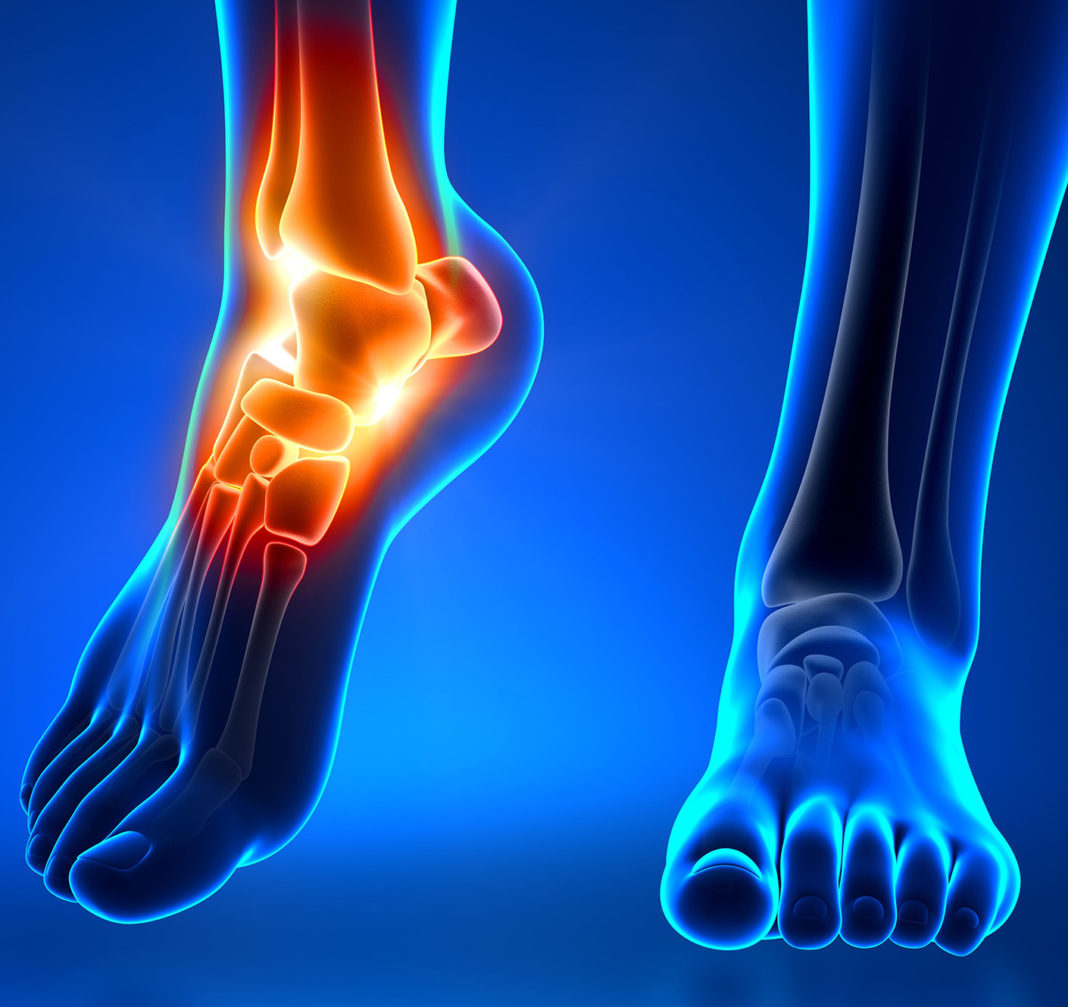 The two primary types of arthritis are:
The two primary types of arthritis are:
- Osteoarthritis, which occurs when the joint surfaces become worn down as a result of wear and tear inside the joint
- Rheumatoid arthritis, an autoimmune disease that occurs when the immune system attacks and destroys healthy joint tissue
Osteoarthritis is by far the more common type. In most cases, age-related wear and tear is the culprit, but repetitive movements, strain on a joint, and injury to a joint are also causes.
What symptoms can arthritis cause in the feet and ankles?
The most common symptoms of arthritis are joint pain and joint stiffness. Sometimes, stiffness can interfere with the mobility of your joints. You may also experience swelling around a joint that’s affected by arthritis, and the skin over the joint may feel warmer than the surrounding skin (a result of inflammation inside the joint).
As the tissue that lines the joint surfaces wears away, friction inside the joint increases, resulting in increased inflammation, pain, and stiffness. Over time, the joint can become frozen and deformed, causing you to permanently lose function and mobility in that joint.
Over time, the joint can become frozen and deformed, causing you to permanently lose function and mobility in that joint.
Arthritis can affect any joint, including the joints in your toes, ankles, heels, and the midsection (or arch) of your feet. If you have arthritis in your feet and ankles, your mobility can be significantly limited, especially if you allow the disease to progress without professional medical treatment.
How does Dr. Roberto treat arthritis in the feet and ankles?
For mild to moderate arthritis, Dr. Robert may recommend over-the-counter nonsteroidal anti-inflammatory drugs to relieve the pain and inflammation. Injections of corticosteroids can also be helpful. Physical therapy and gentle stretching helps prevent joint stiffness. Many arthritis sufferers achieve long-term symptom relief with custom orthotics designed to relieve strain on the affected joint, helping to reduce inflammation that causes joint pain and stiffness.
When a joint is severely affected by arthritis, and even minor movements and pressures cause significant pain, Dr.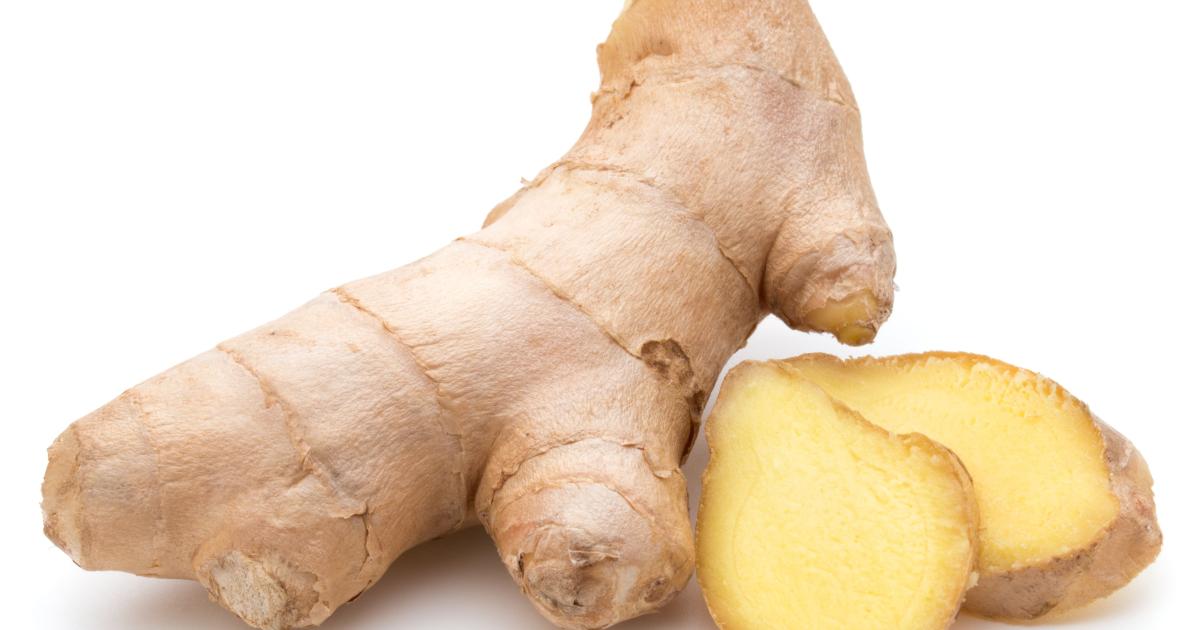 Roberto may recommend surgery to fuse or immobilize joints, preventing movement that can trigger painful symptoms. Several surgical techniques are available, including many that require only small, minimally invasive incisions.
Roberto may recommend surgery to fuse or immobilize joints, preventing movement that can trigger painful symptoms. Several surgical techniques are available, including many that require only small, minimally invasive incisions.
The key to long-term relief is to seek professional care at the first sign of symptoms so treatment can begin as soon as possible.
How to properly treat joint diseases – Russian newspaper
Arthritis and arthrosis have similar symptoms, but the opposite is the treatment.
The names of these diseases come from one Greek word – “arthron” (that is, joint), and people who experience chronic pain in the joints sometimes cannot even say for sure what they are sick with. Meanwhile, the differences between these diseases are much more than similarities: arthritis is inflammation of the joints, and arthrosis is their change, associated not with the inflammatory process, but with the thinning of cartilage, the loss of their elasticity.
Where does that come from
Yes, arthritis and arthrosis are very similar in appearance and sensations: the joints swell, crunch when moving, and hurt. Arthritis and arthrosis alike do not tolerate severe cold or searing heat – therefore, in the summer, these diseases can worsen in those who spend a lot of time on the beach.
But this is where the common arthritis and arthrosis end. But it is worth dwelling on the differences in more detail.
Experts have not come to a consensus as to why a person develops arthrosis.The most likely causes are genetic predisposition, complications after acute arthritis, age-related changes in the joints, excessive loads on cartilage as a result of obesity or the characteristics of professional activity (therefore, arthrosis more often occurs, for example, in former movers and professional athletes). Arthritis, on the other hand, occurs much more often after infectious chlamydia and streptococcus, due to diseases of the nervous system or metabolic disorders, a chronic lack of vitamins and trace elements in the body – and arthritis is often 35-40-year-old people, while arthrosis is considered a disease of the elderly.
How to find out?
Arthritis attacks suddenly and attacks sharply. Your joints can suddenly become very painful during physical exertion, while walking. The pain can come at night, waking you up. Soon you will see that the skin over the joint is reddened, swollen, the place of the arthritic stroke begins to ache, suddenly, inexplicably and for a long time – up to 37 degrees and higher – the temperature rises, the body is stiff in the morning. Arthritis is characterized by “flying” pain when inflammation “jumps” from one joint to another, and symmetrically: if, for example, the right joint is inflamed, then, most likely, the left one will also become inflamed.More often, the disease begins with the hands and fingers, then it can spread to the feet, knee and elbow joints, and the neck.
A damaged joint is where arthrosis occurs, affecting primarily cartilage, and unlike arthritis, it is asymmetric. Initially, the large supporting joints, knee and hip, are affected.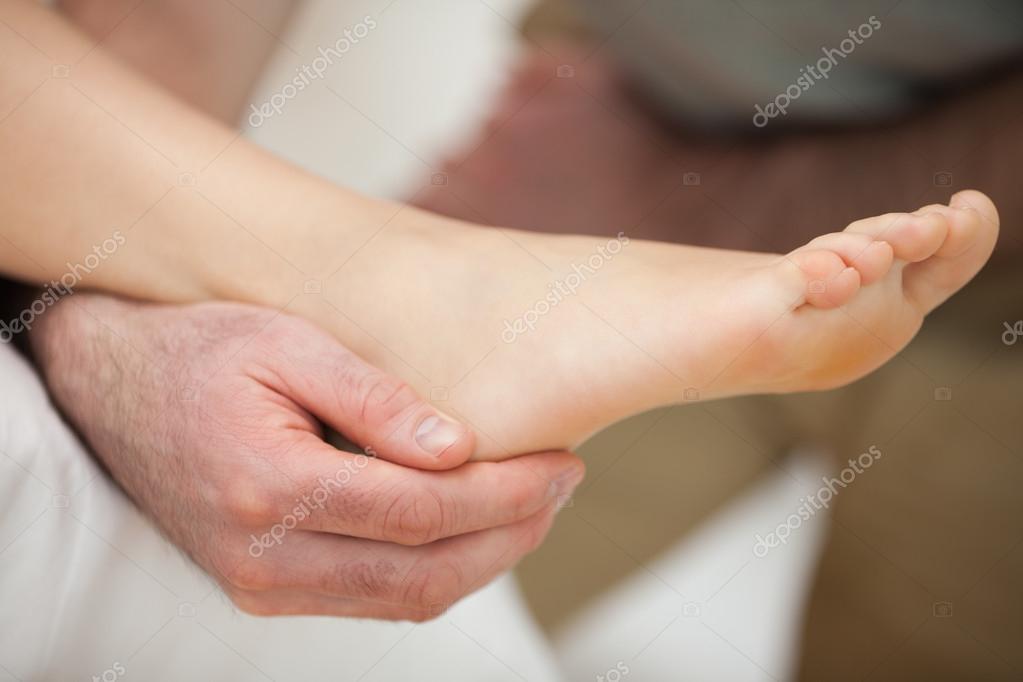 At the beginning of the disease, the joint is not outwardly changed and does not hurt, but as it progresses, especially with excessive exertion, a dull aching pain appears, which intensifies by the end of the day, but passes at rest.The joint gradually – as the cartilage deforms – loses its mobility, it begins to crunch when moving.
At the beginning of the disease, the joint is not outwardly changed and does not hurt, but as it progresses, especially with excessive exertion, a dull aching pain appears, which intensifies by the end of the day, but passes at rest.The joint gradually – as the cartilage deforms – loses its mobility, it begins to crunch when moving.
How to treat?
When beginning pain in the joints, do not tell yourself “it will go away by itself.” You will lose time, irreversible changes will occur in the tissues of the joint, which will lead to disability. Self-medication is also dangerous, without a doctor you do not know for sure whether you have arthritis or arthrosis, and the actions to alleviate the symptoms of diseases are the opposite: with arthrosis, warming helps, and with arthritis, heat is categorically contraindicated.
Antibiotics, anti-inflammatory drugs, pain-relieving ointments, creams, physiotherapy procedures – these are all means of overcoming arthritis. Much depends on the lifestyle, which should be as mobile as possible, and on adherence to a diet – let your food contain a lot of vitamin C and no alcohol at all.
It is good for the arthritic joint to rest several times a day, warm it in a hot bath, and apply a warming compress. Arthrosis is often treated on an outpatient basis, prescribing hormonal and pain relievers, massage, therapeutic exercises.In the most severe cases, only surgery will help the patient.
advice
There are no radical methods of treating joint diseases yet. Medicines relieve pain and inflammation for a while, then the disease progresses again. But in the initial stages, joint pain can be alleviated. To do this:
1 Eat less meat, flour and sweet, more vegetables, fish and seafood. Less salt and hot spices.
2 Try to lose weight: do not make your joints “carry” extra pounds.
3 Do not drink alcohol, it enhances the side (usually harmful) effect of antirheumatic drugs.
4 Move more, walk, ride a bike, dance – and fast dance. If you are already many years old, then at least waltz: movement is the long life of joints.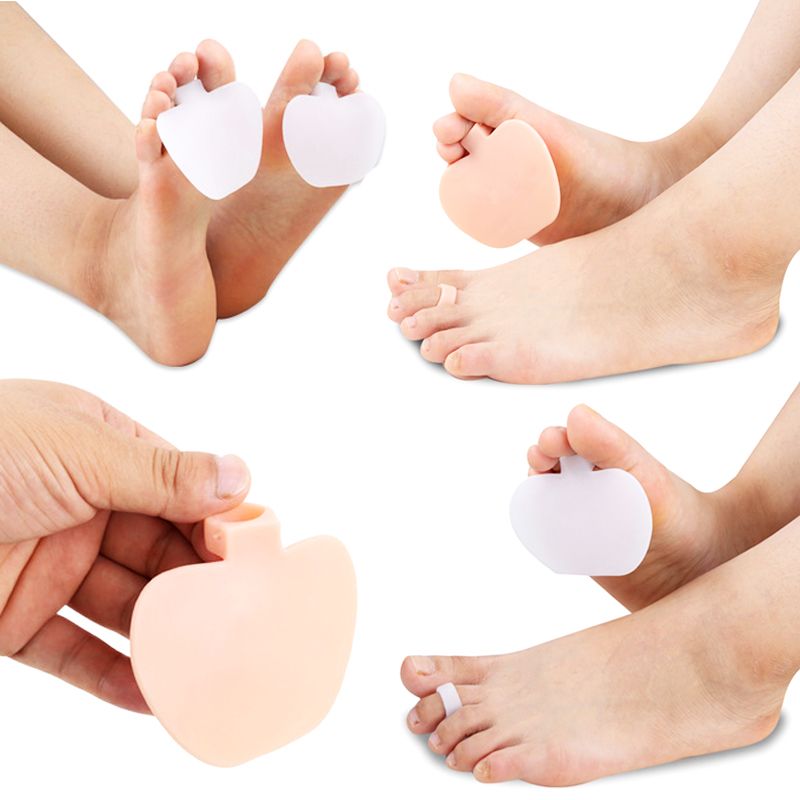
to help medicines
Herbal preparations and traditional medicine for arthrosis and arthritis are recommended to be used only in addition to the treatment prescribed by the doctor.
Here are some recipes:
- Pour two teaspoons of lingonberry leaves with one glass of water. Boil for 10 minutes, strain and drink throughout the day.
- Put 20 g of horse chestnut flowers into half a liter of alcohol or vodka. Insist for two weeks and rub the joints with this.
- Mix equal amounts of honey, iodine, alcohol and glycerin and rub the affected hands and feet.
- Perform 2-4 stretching and 6-8 strengthening exercises daily, but slowly, without jerking.Here are some exercises for both legs for knee arthrosis.
- Lying on your back, straighten your leg (toe towards you) gently lift 20-30 cm from the floor and hold for 30-40 seconds. Then lower your leg and relax. The other – bent at the knee – with the feet resting on the floor, arms along the body.
 With the next exercise, pull the toe of the raised straight leg towards you as much as possible.
With the next exercise, pull the toe of the raised straight leg towards you as much as possible. - Lying on your back, legs bent at the knees, both feet on the floor. Slowly straighten your leg and hold it in place for 20-30 seconds.Then move the leg you are holding to the side.
- Standing, feet shoulder-width apart, palms on hips, lower the pelvis by 20-30 cm (back straight), as if sitting down, for 30-40 seconds.
Arthritis – Sobe Innovative Rehabilitation
Arthritis Shouldn’t Limit You – Physical Therapy Can Help
Did you know that physical therapy can naturally relieve arthritis pain?
Living with arthritis? Our physiotherapists in Hallandale Beach can help you.If you ever wake up with stiff joints that make it difficult to move in the morning and become less painful during the day, you may be suffering from early onset arthritis.
This is a common condition that develops in many people; however, many of them live too long with their painful joints before seeking help.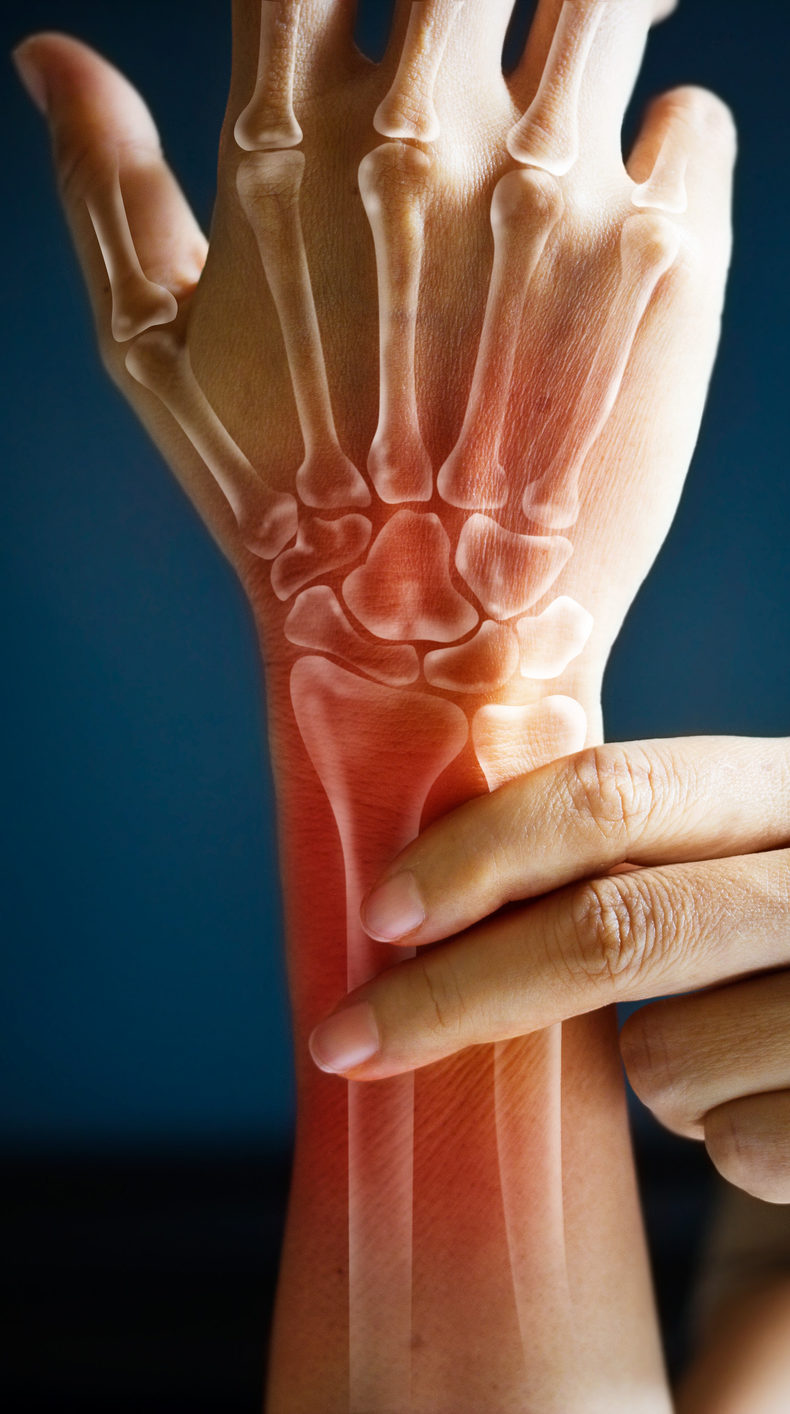
At Sobe Innovative Rehabilitation, we will assess which joints are stiff and painful and assess which exercises will be helpful in relieving arthritis pain during daily activities.
In addition, we will provide you with the resources you need to prevent future arthritis-related injuries. One of our licensed physical therapists will suggest gentle exercises to help improve range of motion, flexibility, and overall function of the affected joint (s).
If you have arthritis or think you may have symptoms of arthritis, contact Sobe Innovative Rehabilitation today to make an appointment.
Physical therapy and arthritis relief
Physiotherapy helps restore normal joint mobility, improve supporting muscle strength, and improve your gait, running, bending and movement.Our treatments are tailored to your specific needs to help you recover quickly and achieve longer lasting results. We’ll also teach you how to prevent future joint injuries and what you can do yourself with the right exercise therapy.
If you have arthritis or think you are, physiotherapy at Sobe Innovative Rehabilitation can help. In many cases, physical therapy can even help avoid surgery, medication, and injections.
What is your arthritis?
According to Arthritis Foundation , arthritis affects more than 50 million people and is currently the leading cause of disability across the country.
Arthritis causes pain and inflammation and can affect one or more joints at the same time.
Rheumatoid arthritis
Rheumatoid arthritis, also known as “inflammatory arthritis”, is also fairly common, although not easily understood.It develops as an autoimmune response, which means that the immune system sees a threat in the joints and decides to attack them.
Researchers have concluded that your medical history, environment, and hormones may be contributing factors to the development of rheumatoid arthritis.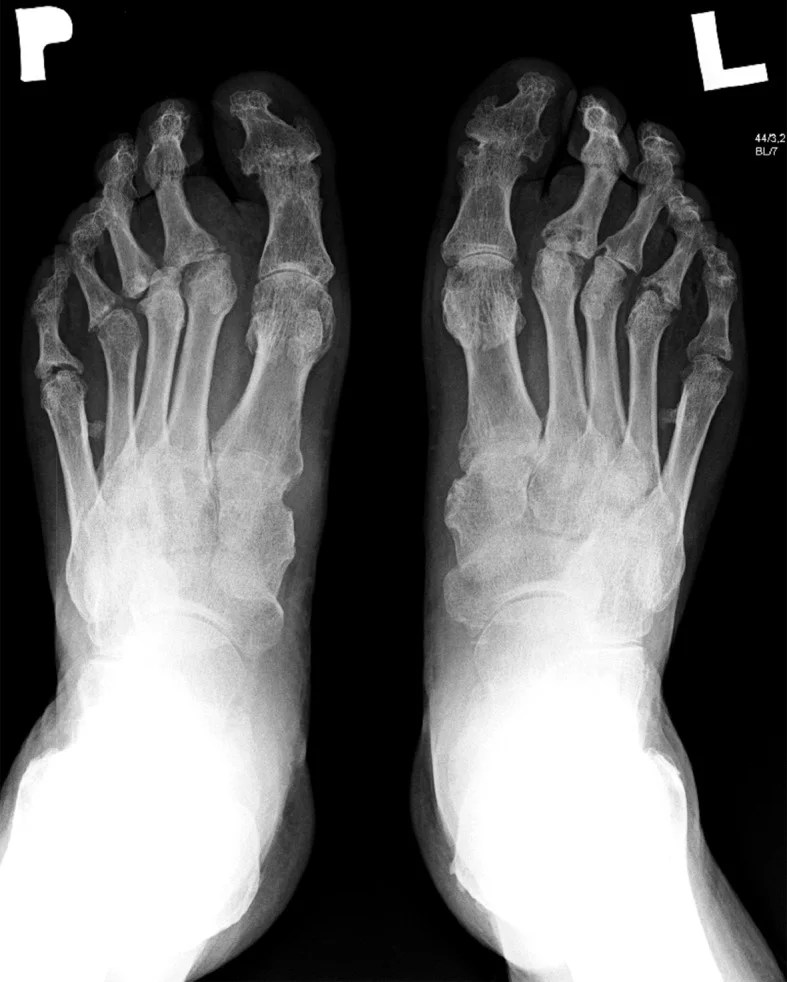 Also, it is usually more common in women than in men. Because it is an autoimmune disease, the same joints on different sides of the body are often affected.
Also, it is usually more common in women than in men. Because it is an autoimmune disease, the same joints on different sides of the body are often affected.
Those with arthritis usually report soreness around the joints that gets worse after prolonged sitting, standing, or inactivity.The pain can get worse when you move, such as when you bend your knees.
You may notice popping or popping sounds in the affected joint (s) when moving, and the joint may be tender or painful to touch. Arthritis can also cause pain when you exercise or work out, and the pain may go away after you stop doing it.
Osteoarthritis
The most common form of arthritis is osteoarthritis.It occurs when the cartilage of the joint wears out due to age or overuse. This causes pain in the joint as the cartilage no longer acts as a thick cushion as it used to. Without a pillow, bones shrink, which in turn triggers an inflammatory response in the joint.
Osteoarthritis, the most common form of arthritis, is usually easily diagnosed. It can be caused by a sudden joint injury or develop after a previous injury has completely healed.For example, let’s say you were a college football player who hit his knee hard.
You heal, recover and return to the game. While the injury has healed, damage to the cartilage or surrounding muscles has occurred, which has reduced support for the joint or slightly altered the movement of the joint. Therefore, it is still possible for you to develop osteoarthritis as a result of this injury later in life.
The same is true for careers of overuse or repetitive movement.For example, if you are a carpenter who uses repetitive hammer movements as an essential part of your job, you may develop osteoarthritis in the joints of your elbows or arms. Being overweight can also increase your risk of developing osteoarthritis, as your knee and hip joints are subject to additional stress.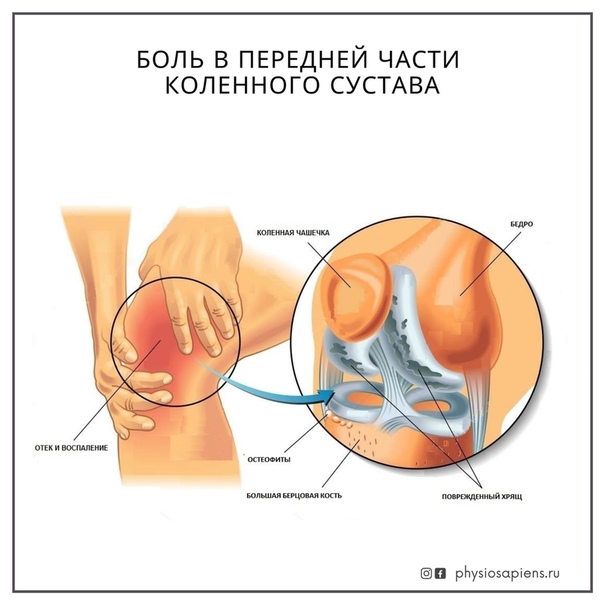
Ready to get started?
Contact Sobe Innovative Rehabilitation today to find out how our services can help you find long-term arthritis pain relief.
One of our physical therapists in Hallandale Beach will perform a physical examination to determine which treatment is best for you. Don’t let your arthritis limit you anymore – make an appointment today.
90,000 symptoms and treatment at the Dr. Bubnovsky Center in Almetyevsk
Joint arthritis treatment
Arthritis is the collective name for all inflammatory processes that occur in the joints in an acute form.With arthritis, only one joint can be affected, which is called monoarthritis. Inflammation of 2-3 joints – “oligoarthritis”, and the spread of the disease to a greater number of joints – “polyarthritis”. The classification of diseases, which are united under a single designation “arthritis”, is very extensive, so we will not give it in full.
Symptoms of arthritis of the joints
The main symptoms of arthritis are pain and crunching when the joint moves, the nature of which mainly depends on the type and stage of the disease.With arthritis, swelling and redness of the skin in the area of the diseased joint, limitation of its mobility and a change in shape are also noted.
Sudden joint pain is the first sign of destructive processes in the body. Arthritis is the main cause of inflammation of the articular cartilage, which in turn changes the structure of the ligaments not for the better. Ultimately, a permanent tissue change may occur. With age, this problem becomes more global and affects the musculoskeletal system with its destructive consequences.
Most often, arthritis affects the feet, elbow and knee joints. This disease occurs in both young children and adults. Therefore, at the moment there is no way to predict the future disease, but it is possible to cure it in a timely manner at the initial stage of manifestation.
Arthritis treatment requires an integrated approach that will help prevent further destructive effects on the body’s bone tissue. It is possible to save a person from complete immobility of limbs and future disability only by seeking qualified help.
As statistics show, a well-chosen recovery program allows in most cases to cure a patient 100% without negative consequences. Therefore, with the slightest concern in the joints, you should immediately seek the advice of a specialist.
Thus, to achieve the best result, it is necessary to resort to complex measures. Therefore, in order to achieve the desired result and overcome the disease, it is necessary:
drug treatment;
physiotherapy;
physiotherapy procedures (up to surgery).
Gymnastics for arthritis of the joints
Since joint disease provokes weakness of muscles and ligaments, arthritis treatment includes a set of special exercises. Their implementation increases the elasticity of tissues, develops flexibility, and helps to make movements more free. Exercise is also a preventative measure to prevent the development of joint disease. This includes strength-bearing exercises as well as movements that increase flexibility.At the same time, it is useful to go in for swimming, arrange regular walks, alternating with cycling.
Surgical treatment of arthritis of the joints
Surgery to treat arthritis of the joints can be small or large.
Minor surgery may be necessary to retrieve a puncture from an injured joint. By examining the liquid in the laboratory, doctors will be able to establish the most accurate diagnosis and prescribe the most effective treatment.Also, small operations include pumping out purulent or blood fluid from the joint cavity. Manipulation, in which medications are delivered directly to the affected area, is also a minor intervention. Such treatment makes it possible to quickly improve the patient’s condition.
Arthroscopy is another type of minor surgery. With it, a hole is pierced, where special devices are inserted to determine the state of the menisci and cartilage of the knee joint.This method helps in carrying out very complex operations for plastic ligaments, removal of menisci, and removal of free bodies from the cavity.
Arthrotomy is a surgical operation during which the cavity of the diseased joint is opened. This type of intervention has to be used quite often, since it is the most effective in treatment.
Corrective surgery for joint deformities
Joints can be deformed due to various processes taking place directly in the joints themselves, in adjacent bone tissues, muscle fibers, ligaments.
To solve such problems, they resort to certain methods. During muscle transplantation, the load is redistributed, and motor activity increases. When removing a portion of the bone – osteotomy – the position of the injured arm or leg is straightened. In this case, the surfaces of the joints are in better contact with each other.
Operations leading to limitation of movement in the joint
With paralysis of the muscles of the limbs, freedom of movement is limited.This can be inconvenient. It is especially difficult to move when the foot hangs down. To alleviate this condition, it is important to use arthroresis, in which a spacer-restraint is installed. Fixing the inactive foot in a certain position increases the patient’s freedom of movement.
Joint resection
Synovial membranes that have separated during dystrophy (with arthrosis) or destroyed under the influence of an inflammatory process of an infectious nature (with arthritis) must be removed.If, during resection, it is necessary to remove dead particles, sequesters, bone fragments, and then clean the cavity with drainage, then it can be considered a full-fledged surgical intervention.
Diagnosis of arthritis of the joints
Diagnosis of types of arthritis is complicated by a variety of causes that cause similar symptoms that accompany joint inflammation. Some common types of arthritis are easy to diagnose, while others can only be identified by a very experienced rheumatologist after a serious examination of the patient.
The main methods for diagnosing joint diseases are radiography and computed tomography. A new method for diagnosing the articular cavity – “arthroscopy”, which allows analyzing the synovial fluid, has also proven itself well. But still, a more complete picture of the pathogenesis of arthritis can only be given by a comprehensive examination of the patient and a comparison of all the results obtained. This will allow the doctor to accurately classify the type of disease and prescribe the correct treatment.
Gonarthrosis – Causes and treatment of osteoarthritis of the knee joint
What is gonarthrosis
Gonarthrosis (arthrosis of the knee joint) is a slowly progressive non-inflammatory degenerative disease. With the disease, there is a change in the quality and quantity (towards thinning) of the articular cartilage. The main complaint is pain, which usually occurs when the knee is bent, when climbing stairs, and after prolonged sitting or lying down.Pain in the morning is a common complaint in the early stages. In this case, patients complain of stiffness of movements, which passes after a while of activity. If there are changes in the cartilage, the joint may become inflamed. Thus, gonatrosis, which originally had a non-inflammatory nature, acquires an inflammatory component. The goal of treatment is to reduce the frequency and duration of the inflammatory phases.
Types of gonarthrosis
The knee joint is formed by three bones:
- Femur (lat. femur )
- Patella (lat. patella )
- Tibia (lat. tibia )
Wear of the articular cartilage occurs between the rubbing surfaces of the bones. Friction between the femur and the tibia occurs in two places: the inner (medial) and outer (lateral) portions. The localization of arthrosis should be reflected in the doctor’s opinion.
- Medial gonarthrosis: the inner part of the articular cartilage has undergone wear.
- Lateral gonarthrosis: The outer part of the articular cartilage has undergone wear and tear
Osteoarthritis is the most common adult disease in the world. According to the Koch Institute, gonarthrosis is the most common localization of the degenerative process in the joints. In second place is arthrosis of the hip joints. 1.2 Age is a significant risk factor. Thus, more than half of women over the age of 60 have gonarthrosis. 1
Causes of gonarthrosis
Often it is not possible to clearly establish the cause of the disease.Often, gonarthrosis is primary, that is, it is caused by aging of the articular cartilage. Also, secondary gonarthrosis is distinguished, which occurs as a result of other pathological processes or conditions. For example, gonarthrosis is secondary, which has arisen against the background of congenital clubfoot or injuries of the knee joints.
Symptoms of gonarthrosis
The following symptoms are typical of gonarthrosis:
- Pain in the knee joints when climbing stairs or walking on uneven surfaces
- Pain and stiffness in the knee joints after prolonged rest, which disappear / decrease with walking
- Pain in the knee joints increases after intense exertion
- Swelling of the knee joints is possible
- With a pronounced process during flexion / extension of the knee joint, a characteristic crisp sound can be heard
- Specific aching knee pains occur in cold and rainy weather
As gonarthrosis progresses, the frequency of symptoms and their severity is increasing.Joint pain can occur even at rest. In this case, the range of motion of the knee joints gradually decreases. 1
Stages of gonartosis
Depending on the severity, there are three stages of gonarthrosis (and arthrosis in general).
Risk factors for gonarthrosis
Knee injury
Injuries of the knee joint, especially damage to the menisci and ligaments, accelerate the wear and tear of the articular cartilage and the aging process of the cartilage.A rupture of the anterior cruciate ligament (ACL) leads to instability of the knee joint, which contributes to the rapid destruction of cartilage and the development of gonarthrosis in a relatively short time.
Lack of physical activity
Physical activity improves cartilage nutrition. Given that cartilage does not have its own blood vessels and nutrients are diffused from surrounding tissues, good blood circulation plays a key role in nourishing the cartilage.
Heredity
Such congenital conditions as knee valgus, knee varus and different limb lengths increase local wear of the cartilage and accelerate the development of gonarthrosis.
Overweight
Overweight is the most significant risk factor.The daily additional load on the cartilage quickly leads to its aging. Then, gonarthrosis develops and progresses rather quickly.
Excessive loads
Cartilage wear occurs faster in people whose activities are associated with hard physical labor, for example, construction workers.
Overload during sports
Professional athletes constantly expose their joints to high loads, so their wear and tear of the articular cartilage is faster.
Metabolic diseases
Usually in metabolic diseases, nutrition of various body tissues, including articular cartilage, is impaired.
Prevention of gonarthrosis
In the presence of excess weight, the knee joints are forced to withstand the weight of additional kilograms daily. This leads to accelerated wear of the articular cartilage and the development of gonarthrosis. Being overweight can be determined using your body mass index (BMI). If it is over 25, then there is overweight. With a BMI over 30, the condition is regarded as obesity.In this case, one of the first recommendations for the prevention of gonarthrosis is weight loss.
Self-help is a way to improve the quality of life
Self-help has a huge impact on the outcome of gonarthrosis treatment. Be active in the fight against illness: watch your own weight, be physically active at all times, and eat healthy foods.
Nutrition for arthrosis
Nutrition plays an important role in the development, prevention and treatment of arthrosis.Of course, with the help of a diet, it is impossible to cure gonarthrosis, but you can significantly slow down its development.
A study in Australia showed that gonarthrosis develops on average several years later in people of normal weight. In contrast, increased wear and tear of the articular cartilage was found in healthy, overweight young people. 1
Therapeutic exercises for arthrosis
Considering the cause of the development of the disease (wear of the cartilage), many are wondering which is better: to exercise or to rest more without stressing the joints? There is a monosyllabic answer to this question: exercise is extremely useful for those suffering from gonarthrosis and for the prevention of this disease! Usually, when pain occurs, people try to give their joints peace, but this is the wrong way.Lack of mobility is the main risk factor for arthrosis in general and gonarthrosis in particular.
Special exercises can increase muscle strength and improve coordination. In addition, the movement of the joint promotes the formation of synovial fluid, which acts as a lubricant and reduces friction of the articular surfaces against each other.
Sports and gonarthrosis
What really helps? Does exercise help you to relax? One thing is for sure: sports and exercise are invaluable both for those who already suffer from gonarthrosis and for those who want to prevent it! When people are in pain, they try to do as little movement as possible with the sore knee.This is a fundamentally wrong approach, since insufficient physical activity is one of the main factors in the development of arthrosis.
Targeted training of arthrosis affected joints strengthens muscles and improves coordination. When moving, more synovial fluid is produced, which contributes to less wear on the articular cartilage.
Most preferred sports for patients with osteoarthritis
Preferred sports with gentle stress on joints:
- Swimming
- Water aerobics
- Cycling
- Golf
- Skiing
- Walking
Unwanted Contact Sports:
- Football
- Alpine Skiing
- Tennis
- Volleyball
Determine the type of sport activity that suits you best.Avoid strenuous exercise. If you are unsure if you will be able to do any sport, seek the advice of your doctor.
Treatment of gonarthrosis
Although gonarthrosis cannot be cured, there are many ways to relieve pain and improve quality of life.
Conservative treatment
Non-drug methods
- Orthotics (insoles, bandages, orthoses)
- Physiotherapy and mechanotherapy
- Physiotherapy (magnetic field, ultrasound, electrical stimulation, high-frequency currents)
- Rehabilitation therapy
- Naturopathy (acupuncture, aqua aerobics, etc.)etc.)
Drug therapy
- Pain relievers
- Anti-inflammatory drugs
Six Home Exercises
Exercises that can be performed without pain will help fight the progression of gonarthrosis. The exercises described below are not only beneficial for the knee joint.They affect the entire musculoskeletal system and keep the muscular system in good shape.
Breeding legs
Leg extension with elastic bandage
Stretching the muscles of the back of the thigh
Dynamic stretch of the gastrocnemius muscle
Foot rolling
Lunges
Surgical treatment
With preservation of own joint
Arthroscopy
Arthroscopy is relatively rarely used to treat gonarthrosis.The operation is performed from mini-incisions through which endoscopic video cameras are inserted into the joint, and the surgeon can perform one or another manipulation inside the joint under visual control.
Corrective osteotomy
During corrective osteotomy, the bone is dissected at a certain angle, followed by restoration of its integrity. In this way, the disturbed axis of the valgus or varus knee joint is corrected. The restoration of the normal axis can slow down the wear of the articular cartilage.
Endoprosthetics of the joint
Partial arthroplasty
If only one part of the knee is affected, partial arthroplasty can be performed. The affected joint element is removed and replaced with a metal or ceramic prosthesis.
Total arthroplasty
Total arthroplasty is performed when the entire knee joint is affected and other treatments are ineffective.During the operation, the articular surfaces affected by arthrosis are removed. Then the metal and plastic elements of the artificial joint are installed.
Products medi
Orthoses that correct the position of the knee joint can become an effective alternative to endoprosthetics and pain relievers.
With the help of knee braces and orthoses: Genumedi, Collamed OA, M.3s OA and M.4s OA, gonarthrosis can be treated at different stages.
Sources:
1 Arthrose. Gesundheitsberichterstattung des Bundes; Heft 54. Herausgeber: Robert Koch-Institut, Berlin 2013. Published online at: www.rki.de/DE/Content/Gesundheitsmonitoring/Gesundheitsberichterstattung/GBEDownloadsT/arthrose.pdf (Last accessed: 02/27/2018).
2 Fuchs J.et al. Prävalenz ausgewählter muskuloskelettaler Erkrankungen. Ergebnisse der Studie zur Gesundheit Erwachsener in Deutschland (DEGS1). 2013; 56 (5-6): 678-686.
3 Paschos NK. Anterior cruciate ligament reconstruction and knee osteoarthritis. World J Orthop. 2017; 8 (3): 212-217.
Human body
Ligament damage often occurs during sports.
Tendons and ligaments
Treatment of rheumatoid arthritis in the Krasnaya Pakhra sanatorium
Treatment of rheumatoid arthritis in the Krasnaya Pakhra sanatorium
We care about our guests and are taking action to combat the spread of the COVID-19 virus.We care about the safety of our guests.
More details
Treatment of the disease is aimed at preventing complications, reducing arthritis activity, reducing joint pain and stiffness.Basically, medical methods of treatment are used. Pain relievers, anti-inflammatory drugs, immunomodulators are used. Treatment of rheumatoid arthritis should be carried out in a comprehensive manner, which is why patients are often prescribed spa treatment.
A stay in a sanatorium implies not only drug treatment, but also a number of other measures that have a beneficial effect on the healing process. Proper nutrition plays an important role in the fight against arthritis. Visitors to the sanatoriums are offered a specially designed diet that excludes fatty meat, milk, citrus fruits, corn, rye and oatmeal.For local exposure to the affected area, physiotherapy is recommended: electrophoresis, magnetotherapy, ultraviolet irradiation of joints. During periods of remission, massages and physiotherapy exercises are effective. With the help of a complex of such methods of treatment, positive dynamics is achieved in the process of recovery.
Treatment results
The result of treatment depends on the correct selection of medicines.What kind of remedy will help in a particular case, even the most experienced doctor cannot predict. Therefore, the treatment is chosen by trial and error. Hormonal drugs provide noticeable relief. They significantly reduce pain, relieve stiffness and suppress weakness. But hormones are dangerous. They cause affection. There comes a time when they need to be abandoned, which becomes a real problem for patients. In combination with mud treatment, medications improve the patient’s condition.Only regular therapy for six months can give noticeable results.
Consequences of not receiving treatment
Complications are the same as in ordinary arthritis – skin and eye damage, heart disease, blood clots, pleurisy.
Rheumatoid arthritis is a chronic inflammatory disease of the connective tissue that mainly affects small joints (most often the joints of the bones and feet).Rheumatoid arthritis occurs due to disorders in the immune system, which can be caused by a genetic predisposition, infection, hypothermia, stress, pregnancy.
90,000 Useful information about arthrosis of the feet (post-traumatic arthrosis of the ankle joint, plantar fasceitis, etc.)
The causes of foot pain can be:
- acute and repetitive injuries, illnesses, or a combination thereof. This can be observed in sports, under special working conditions associated with physical activity and heavy loads on the foot.
- Poor biomechanical posture, such as touching tight shoes and high heels, can cause pain in the ball of the foot. Tightly laced shoes can cause pain or bruising in the instep.
Certain types of injuries
Foot injuries such as ligament tears, muscle sprains, bruises and fractures occur suddenly (acutely). Tears, sprains, fractures, and bruises can be the result of single or combined stress on the foot. A foot or ankle sprain occurs when the ligaments that connect the bones are overstretched and torn. The foot also hurts with weak ligaments of the joints.
Bursa muscles or fascia of the foot can be stretched by overexertion, heavy load, bruise or cut (for example, if you step on a sharp object).Achilles tendonitis is a common injury to the tendon that attaches to the back of the heel.
Injury to the bones and joints of the foot can be caused by a single blow, twisting of the leg, or multiple injuries that can lead to fracture. Blunt injuries, such as stepping on a foot, can cause injury to muscles and ligaments in addition to bruising or bruising. A direct blow to the foot can bruise, rupture the skin, or even break bones. Metatarsalgia is pain in the metatarsal part of the foot.
The term “stone bruise” usually refers to specific localized pain and tenderness in the lower part of the foot. In athletes, as a result of heavy exertion, the ligaments at the base of the thumb are often stretched. Injury to the nail can be accompanied by bleeding under the nail and loss of the nail. As a result of frequent injuries and bruises to the bones, muscles, ligaments of the foot, an overgrowth of bone, known as a spur or bony outgrowth, can develop.
Certain types of infections
The foot also hurts during viral and fungal infections.Diabetes mellitus, Hansen’s disease, arthritis, gout and general illnesses can also cause pain in the foot. Disorders of the nerves in the feet can cause numbness and a burning sensation in the foot, a phenomenon known as peripheral neuropathy.
Plantar warts caused by an infection can cause irritation and pain in the foot. The athlete’s foot is a fungal disease that causes a lot of suffering. If your foot hurts, you should examine your nails, possibly because of an ingrown toenail. An ingrown toenail is the process of ingrowing the nail plate into the skin tissue, causing inflammation and pain.
A rubbing or burning sensation on the surface of the foot is usually the first sign of calluses. Itching and burning between the toes or over the entire foot is a sign of infection or fungal infection (athlete’s foot). Pain and redness in the area of the nail indicates ingrowth of the nail.
When should I see a doctor?
If the foot hurts and interferes with normal movement, if movement causes pain, consult a doctor. Treatment of the foot is necessary if: there is a visible deformity, the functions of the foot are impaired, pain occurs, pain is accompanied by swelling or discoloration of the skin, toes, the temperature rises in the injured area of the foot, it is impossible to touch the sore spot and you cannot move in the usual way.
At the doctor
The specialist will visually and physically examine the state of the foot at rest, with or without exercise.
The doctor will feel the sole and arch of the foot to determine obvious deformity, pain, any abnormalities and changes in the bones of the foot and its arch.
Checks how the muscles are functioning. This examination may include feeling the foot, turning it with your hands, moving against resistance, perhaps being asked to walk or run.
The doctor will check the sensitivity of the sole to determine if the nerves are damaged.
An X-ray or MRI is done to determine if there is damage or any abnormalities in the bones or soft tissues.
Treatment is then prescribed according to the cause of the pain in the foot.
TIPS to relieve your condition before going to the doctor:
- Rest your leg,
- Apply ice,
- Apply a tight bandage,
- Keep your legs elevated.
- You can take pain medications that are sold in pharmacies without a prescription.
Medical treatment
As soon as the reasons why the foot hurts are determined and the severity is assessed, treatment, corrective and rehabilitation measures are prescribed.
Physiotherapy, such as ultrasound, various types of electrical stimulation, light therapy (laser), and / or manual therapy to relieve pain, improve blood circulation in the injured area of the foot by qualified medical personnel, which promotes healing.
Restrictions on motor activity.
Replacement of motor activity that aggravates pain. Running is undesirable because the body has to experience tremors when it touches the ground. It can be replaced by cycling, elliptical trainers, swimming, ski trainers – they minimize the load and help maintain the physical shape of the foot.
Corrective preventive measures
Change of shoes or use of other instep supports.
Careful selection of shoes, including the combination of socks and laces, to avoid friction and crushing of the foot.
Additional support for the foot used in shoes: instep supports, pads, orthopedic insoles that help support the foot in the desired position.
Sports shoes lose the elasticity of the soles with use and aging. Experience shows that shoes should be changed every six months, and if they are used constantly, then more often. The use of interchangeable insoles improves energy absorption and support for the foot. Ideally, the insoles are tailor-made for you.
The biomechanics of the foot can also be improved with over-the-counter orthopedic aids.
Strengthening muscle function
Exercise is sometimes prescribed to strengthen the injured area and improve stability.
Flexibility exercises maintain muscle length. Flexible and trained muscles are easier to protect from injury.
Occasionally it is necessary to use appropriate medications to relieve inflammation and symptoms.
Surgical intervention is also possible in some cases.
IMPORTANT! Constant medical supervision until complete recovery.
After the end of treatment, it is necessary to observe a doctor, regular check-ups, x-rays.
WARNING!
Before you start exercising, there are a few things to consider. How healthy is your health? First of all, you need to consult a doctor, he will assess the state of your cardiovascular system, possible contraindications, unwanted medical problems. If you have diseases such as gout, diabetes mellitus, arthritis and neuropathy, then treatment is necessary first.
Specialists of sports medicine, orthopedists, physiotherapists will help you to choose the right set of trainings. Before you start exercising, pre-training can help reduce your risk of pain. In any kind of activity, it is important to adhere to the technique, this will help to perform the exercises correctly and avoid injury. In this case, the role of an instructor is important, with his help you will develop good biomechanics and can get rid of foot pain.
As pain is relieved and muscle strength and flexibility are restored in the foot, you can gradually return to normal activities.When resuming physical activity after foot treatment, the same factors should be considered as for the initial training session. Pain in the foot can be caused by too much exertion and performing a movement too quickly. If your foot hurts, you shouldn’t ignore the pain as it can worsen the problem. At different times of the year, and pain in the foot can be different.
Stress of the foot is always associated with the load on it. If the legs are not trained and are not ready to increase the load at the beginning of the new season, muscle strains, a split shin, tendonitis – tendon dystrophy – are inevitable.
If your foot hurts, an optimal exercise program should begin with expert examination and advice and reasonable planning.
The physical training program should include components such as strengthening the abdominal muscles, core muscles, flexibility exercises in accordance with the training goals or the sport.
IN BRIEF
- The foot is a complex anatomical mechanism, subject to the influence of internal diseases of the body or diseases of the foot itself.
- 2. The arch of the foot is the first to take the load and regulate the force transmitted to the body when the body hits the ground.
- If your foot hurts and this pain interferes with normal movements, you should see a doctor.
- Treatment for the foot depends on the cause of the pain and may include medication, strengthening, stretching, and the use of physical therapy.
__________________________________________________________________________
Post-traumatic arthrosis of the ankle is a form of arthrosis of the ankle that was caused by direct trauma.Symptoms of arthrosis can appear years after the injury.
Symptoms of this disease include:
Pain
Soreness
Swelling around the joint
Ankle immobility
Joint deformity
Instability
Bone spurs that form this joint
?
Treatment of post-traumatic arthrosis of the ankle joint is carried out only under the supervision of a physician.
Surgery may be required when non-invasive treatments for arthrosis are no longer effective.
Operations include:
Arthroscopy. I make small incisions, the surgeon can remove bone spurs or areas of the damaged bone surface.
Arthrodesis (connection). The surgeon connects the bones of the joint completely, making one long bone.
Arthroplasty (joint replacement). The damaged ankle joint is replaced with an artificial implant.
________________________________________________________________________________
Plantar fasceitis
The arches of the foot absorb all loads when moving, walking, running.Injuries to the plantar fascia are often the cause of pain in the arch of the foot. The plantar fascia is a wide fibrous cord that runs from the calcaneus to the forefoot and supports the arch. When the plantar fascia is damaged, the resulting inflammation causes pain in the arch of the foot. High instep or flat feet can also cause pain due to foot deformity.
Repeated overstrain of the same foot structure can cause fatigue fractures, tendonitis, plantar fasciitis, and acute or chronic osteoarthritis.When the plantar fascia is stretched, pain is felt in the lower part of the foot from the heel to the base of the toes. Stretching the arch of the foot can also increase or decrease pain in the plantar fascia.
In mild cases of plantar fasciitis, pain may be relieved by warming up the soft tissues of the foot; however, it can increase again as the load on the foot increases. In more serious cases of plantar fasciitis, the pain increases when the arch of the foot is overstrained. With plantar fasciitis, the foot is especially painful in the morning until it is “warmed up” by walking.If your foot hurts at night, it may be not only a sign of plantar fasciitis, but also some other conditions.
Psoriatic arthritis
Traditionally October 12 is celebrated as the World Day Against Arthritis, whose main task is to draw the attention of the medical community and the population to the problems of rheumatic diseases, to highlight the importance of issues of early diagnosis, treatment, prevention and rehabilitation.
The urgency of this problem is due to the frequent defeat of young people of working age, rapid disability of patients with untimely treatment and non-compliance with the principles of treatment.
Psoriatic arthritis is a form of arthritis that affects people with psoriasis. It is considered the second most common inflammatory joint disease after rheumatoid arthritis. It is diagnosed in 7-39% of patients with psoriasis. Psoriasis is a skin disorder in which plaques form on the skin, consisting of dense patches covered with dry, keratinized layers of skin cells.The disease belongs to the autoimmune group, that is, it occurs when the immune system, which normally protects the body from harmful agents, such as bacteria and viruses, mistakenly begins to attack healthy cells and tissues.
Inappropriate immune response causes joint inflammation and overproduction of skin cells. It is assumed that heredity and environment play a role. Many people with psoriatic arthritis have close relatives (parents, siblings) with psoriasis.Researchers have found specific genetic markers associated with this disease. If one of your close relatives suffers from psoriatic arthritis, this does not mean that the disease will develop in you, it only means that you have a predisposition to this disease. Physical injury or infectious (viral) disease can trigger the development of psoriatic arthritis in people with a hereditary predisposition. Many people first develop psoriasis and later join inflammation of the joints – arthritis.But sometimes arthritis precedes psoriasis.
Joint pain, stiffness and swelling are among the main symptoms of psoriatic arthritis. Any joints, including the small joints of the hands, as well as the spine, can be affected. The development of the disease is unpredictable: from mild manifestations to pronounced changes in the joints. Both psoriasis and psoriatic arthritis are chronic diseases, over the years they tend to progress and become protracted, but there may be periods of “calm” (remission), alternating with periods of exacerbation.
The defeat of the joints in psoriatic arthritis is often asymmetric. If arthritis affects the hands and feet, the inflammation and swelling of the tendons can cause the characteristic thickening of the fingers (dactylitis), making them look like a small sausage (“sausage” fingers). Small joints of the hands and feet near the nails (distal interphalangeal joints) may be involved. Nails also quite often become characteristic of psoriasis: they thicken, change color, and pits appear in them.A form of psoriatic arthritis called spondylitis is associated with inflammation of the spine. Characterized by back pain, stiffness in the cervical and lumbar regions, and inflammation of the joints between the spine and the pelvis (sacroiliac joints). A small percentage of people with psoriatic arthritis have its severe (destructive) form – mutating arthritis. Over the years, this form of arthritis destroys the small bones of the hands, leading to permanent deformation and dysfunction.
If you have psoriasis, be sure to tell your doctor about the associated joint pain.Psoriatic arthritis can start suddenly or gradually, but in any case, the disease can seriously damage the joints if left untreated. There is no specific test that confirms psoriatic arthritis, so the doctor will assess all the symptoms and prescribe examinations to exclude other possible joint diseases. A timely diagnosis and timely prescribed treatment will slow down the development of the disease and avoid irreversible consequences.
Your doctor may use other specialists to help you develop an optimal program for the control and treatment of your condition.In general, a healthy lifestyle and general well-being of the body play an important role in your well-being.
Major treatment goals include reducing joint pain and inflammation, controlling skin manifestations of psoriasis, and slowing (or preventing) joint damage. The therapy is complex and includes the use of external drugs, oral medications and other methods of treatment.
Psoriasis requires careful skin care. You should use soft cosmetics, soap, avoid exposure to any irritating household chemicals.
Depending on the severity of the disease, the severity of the pain, the doctor will help you choose a comprehensive treatment program for the disease, which will include correctly selected physical exercises (a physiotherapy instructor will recommend a set of suitable exercises), work and rest regimen and medicines. There are different groups of drugs that control psoriasis and improve the condition and appearance of the skin. For arthritis, drugs from the NSAID group are most often prescribed to reduce pain, inflammation and joint stiffness.Such drugs act quickly enough and are not addictive. In severe cases of arthritis, it is possible to use hormonal and immunomodulatory drugs. Complex treatment in addition to drugs includes: Physiotherapy procedures – an effective remedy in eliminating not only skin manifestations, it has a positive effect on the state of bone tissue. Laser therapy, ultrasound treatment, microcurrents are used. Not the last link in healing procedures is medical gymnastics.Reasonable physical activity, correctly selected exercises, alternation of physical tension and rest contribute to the restoration of joints.
Patients with psoriatic arthritis often have chronic overwork and depression. The doctor will help you cope with such psychological problems, as well as give recommendations, adherence to which will help you to improve your quality of life.
Promises of “instant cure”, “miraculous relief” sound very attractive to people with chronic disease.Most of the products advertised in this way, be it drugs, nutritional supplements, or any device, are harmless but useless. They are usually expensive and have little proven or questionable effectiveness. Before taking any remedies, be sure to consult with your doctor.
Psoriatic arthritis is a difficult disease, drugs can slow down the process, but it is still impossible to completely eliminate it. If a person realizes the seriousness of the problem, tries to eliminate provoking factors, learns to anticipate exacerbations and take measures in advance to prevent them, responsibly follows the instructions of doctors, he will be able to prolong the quality of life for a long time and prevent serious complications.
LEAD A HEALTHY LIFESTYLE!
BE HEALTHY!
Head. Department of Prevention Yu.

 The foot and ankle joints where it’s most common are:
The foot and ankle joints where it’s most common are:
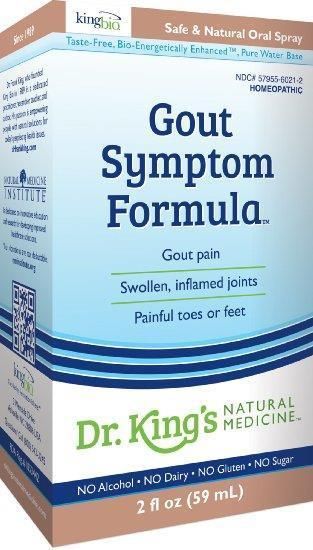 Face a wall with your palms flat against it. Step one foot forward and one foot back. Lean forward, keeping your heels on the floor. Feel the pull in the Achilles tendon and calf of your rear leg. Hold for 10 seconds. Repeat this exercise three times on each side.
Face a wall with your palms flat against it. Step one foot forward and one foot back. Lean forward, keeping your heels on the floor. Feel the pull in the Achilles tendon and calf of your rear leg. Hold for 10 seconds. Repeat this exercise three times on each side.
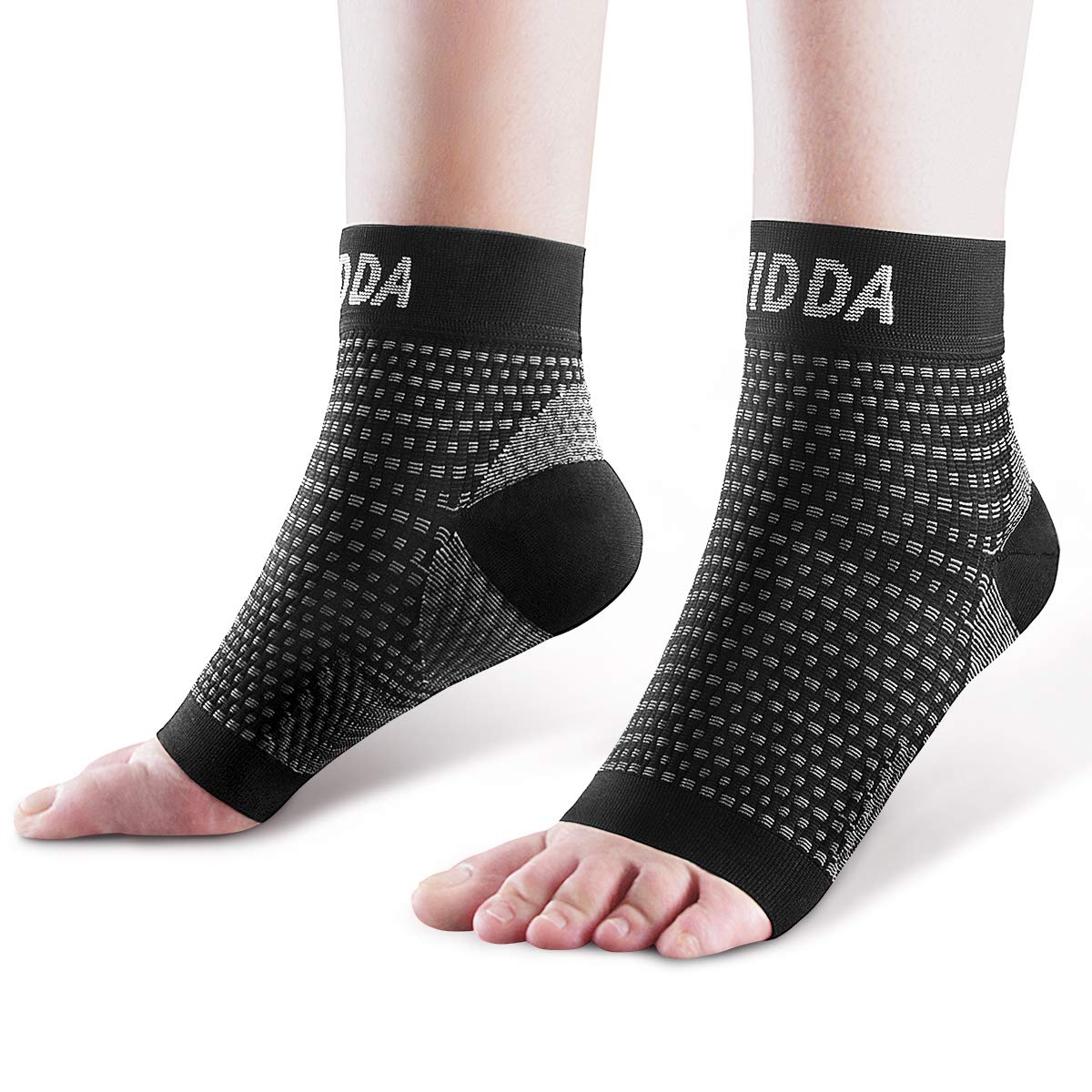 With the next exercise, pull the toe of the raised straight leg towards you as much as possible.
With the next exercise, pull the toe of the raised straight leg towards you as much as possible.